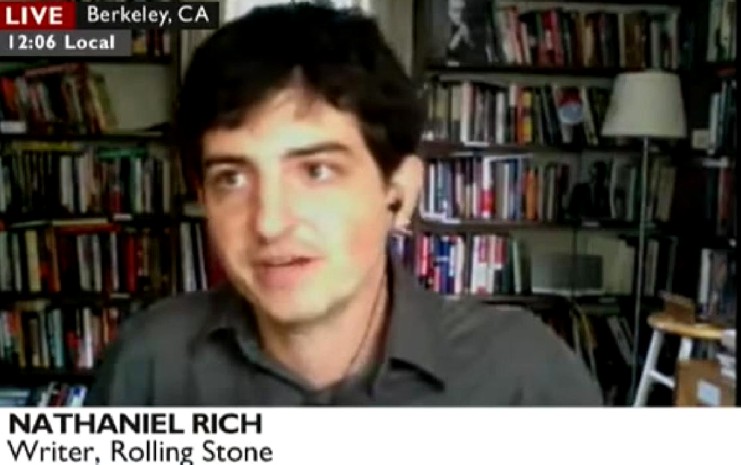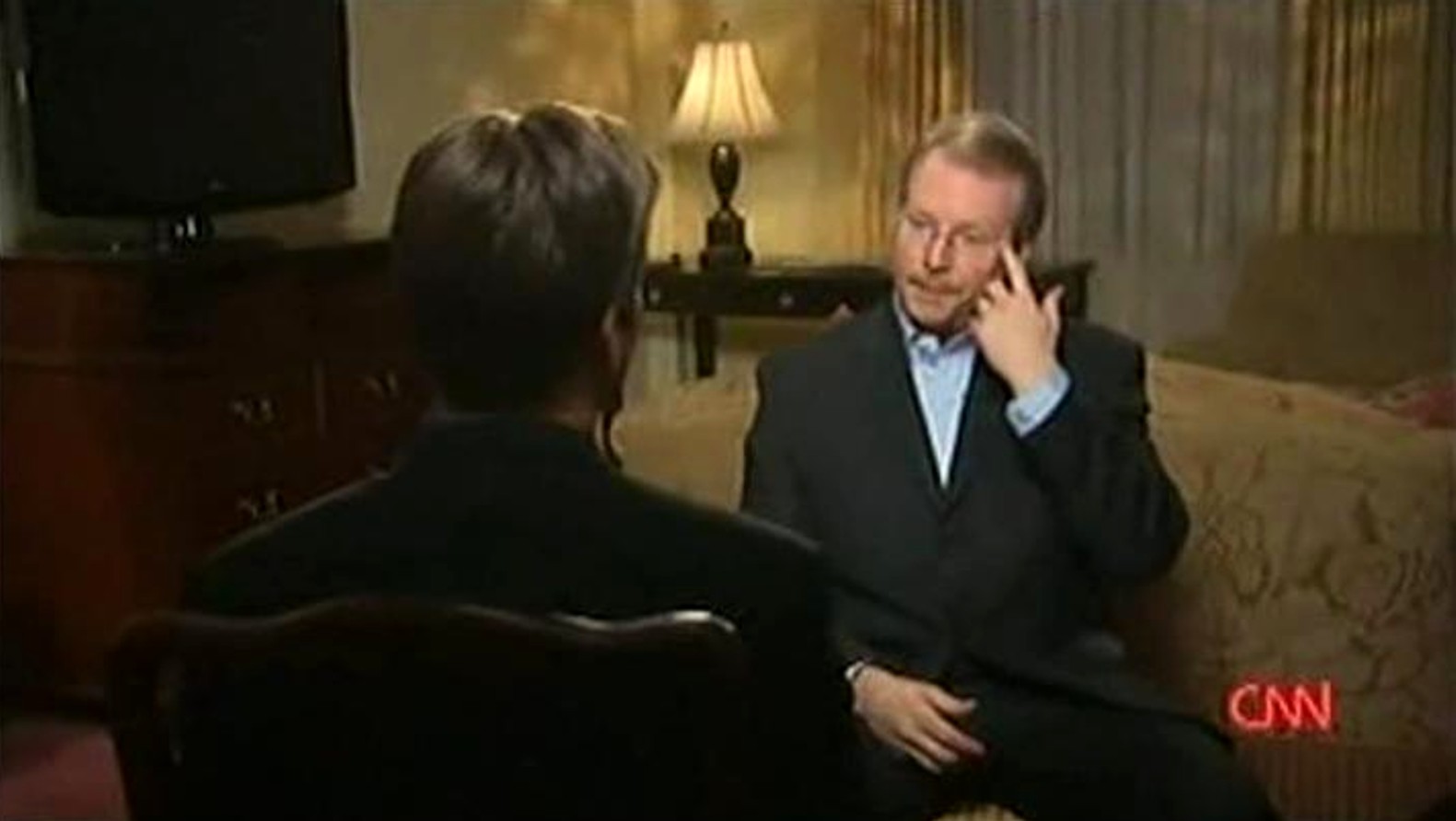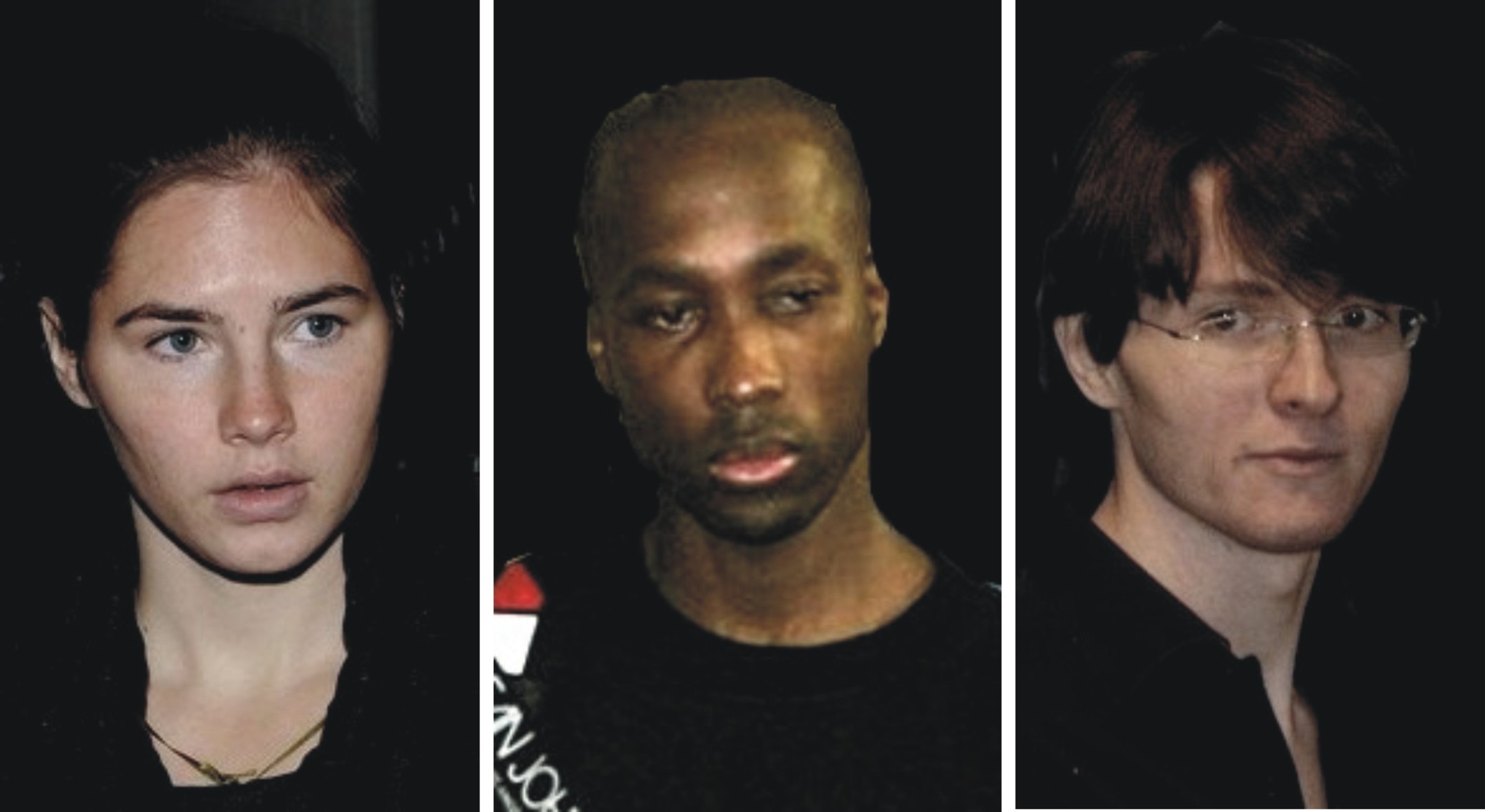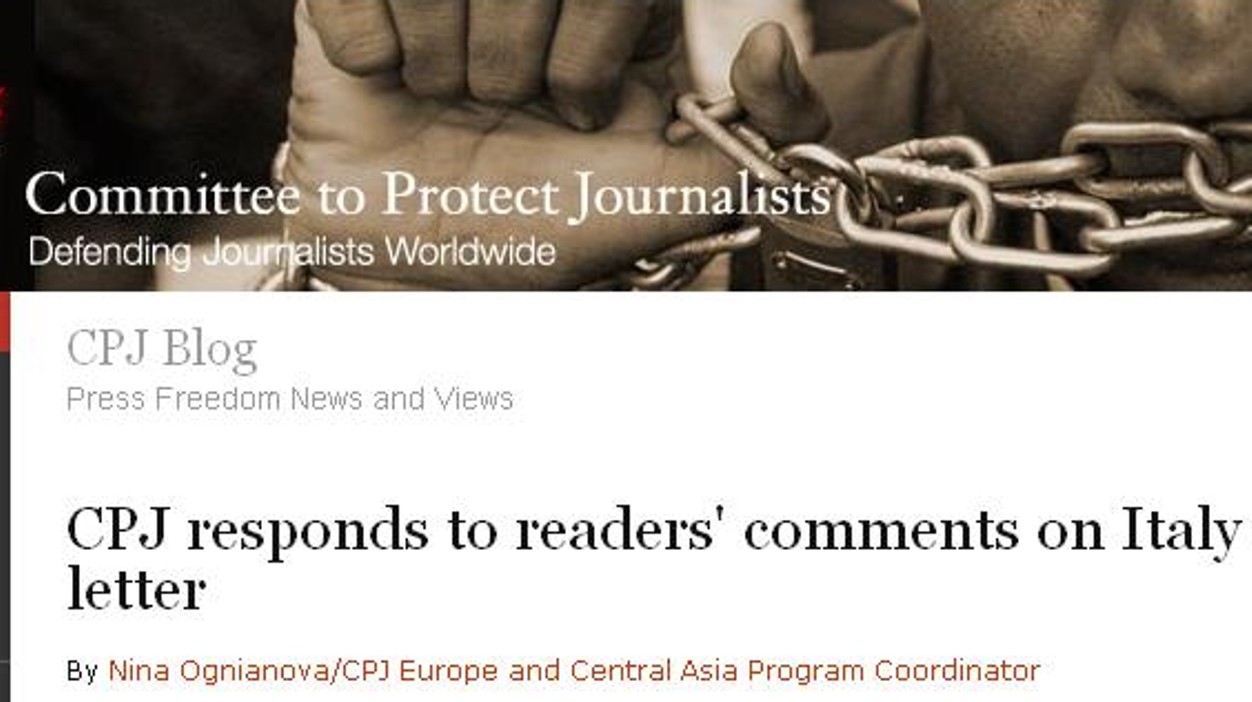
Category: Knox-Marriott PR
Wednesday, June 04, 2014
Rabid “Ground Report” Owner Rachel Sterne Haot Works For A Prominent Italian-American
Posted by Peter Quennell
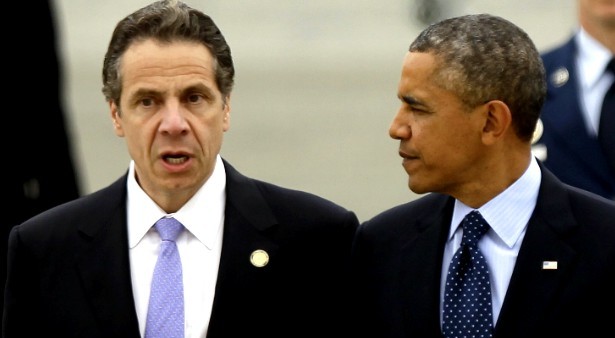
New York State Governor Andrew Cuomo, brother of CNN’s Chris Cuomo, with the President of the US
Haot “Secretly” Owns Inflammatory Ground Report
The shadowy founder and owner of the bitterly anti-Italian Ground Report “citizen journalism” website works for one of the most prominent Italian-Americans in the United States.
He is Andrew Cuomo, the very pro-Italy governor of the State of New York. Brother of Chris Cuomo who in his CNN TV persona has twice interviewed Amanda Knox, each time seemingly unconvinced and underwhelmed.
In contrast, for Rachel Sterne Haot it has been a case of rabid pedal-to-the-floor Knoxiana and rabid anti-Italian demonizing for the past few years to boost her anemic readership and to try to make a buck. Other website owners with better judgment had previously kicked off these dangerous crazies.
See very typical examples of false accusations of serious crimes by Italian officials here and here and here and here and here. If any media request this help, we can provide links or captures for 150+ more.
Pro-justice pro-Italy pro-Meredith points of view have been remorselessly edited out for nearly four years. Protests of defamation have been repeatedly brushed off with the claim that “a lawyer” who is never named says the defamation is just fine.
This new post below on Ground Report was by the (of course) anonymous “Jay Rap” and represents his sixth inflammatory and highly defamatory post in just three weeks.
Later in the Interrogation Hoax series, when we have finished laying out what really happened, we’ll take apart all such misleading and defamatory posts. May note be taken of them in Albany and Italy.
The Rudy Guede Hoax
Here’s a quick rebuttal of Jay Rap’s untethered rant about Rudy Guede, who will be the subject of a second hoax series soon. Prior to the attack on Meredith, police had no knowledge or written record of either Rudy Guede or Patrick.
Dr Mignini had never even heard of Guede till analysis days after the murder of his handprint surfaced who he was (Knox didn’t name Guede but carefully pointed at him, as this series of transcripts shows).
Guede did not ever work for the police. Guede did not ever get even one break in this case.
Milan police released him after he was found staying overnight in a Milan pre-school only because he had no prior record, not because anyone in Perugia told them to. In 2009 Guede offered to testify against RS and AK at trial in exchange for a break. HE WAS TURNED DOWN. No breaks at all.
“Knox Was Intentionally Framed By Italian Police”
Rachel Sterne Haot may wish to note that Jay Rap’s made-up accusations here go away beyond what already cost Amanda Knox three years. Everything shown here in bold (and more) is untrue. All of Jay Rap’s histrionic posts are pure fiction.
If you are following our Interrogation Hoax series, you will see immediately how wildly wrong this all is. If not, scroll down to “2. How Knox helped police with recap/summary”
Following up on the Italian police motive, this series will explore the positive indications that the Italian police intentionally framed Amanda Knox and Raffaelle Sollecito for the murder of Meredith Kercher. Here we review the pre-planned illegal interrogations of Amanda Knox and Raffaele Sollecito. This is a summary of a review here (link).
Again, the motivation for framing Knox and Sollecito is to deflect attention away from Rudy Guede in the killing of Meredith Kercher, so as to conceal the culpability of the Perugian authorities and Giuliano Mignini for having protected and thus enabled Guede to murder Meredith Kercher. In short, self preservation. (For a review of the Police motive for framing Amanda Knox for the murder of Meredith Kercher, please see this previous article (link), or a summary of that article here (link).
The first indication of intentional framing by the Italian police, is the text book characteristics of the intensive and regimented pre-plamnned program of interrogations that were conducted by the police, resulting in falsely incriminating statements from the defendants.
It should first be said, that no confession taken under any circumstance whatsoever, can overcome the overwhelming physical evidence that the murder of Meredith Kercher was committed only by Rudy Guede. The lack of any physical trace of anyone else in the tiny blood soaked room where Meredith was killed, renders it a scientific impossibility that anyone but Rudy Guede, and he alone, killed Meredith Kercher. There is no evidence of a “˜staged break-in’, that claim is simply a distraction from this basic and obvious truth. Having said that, let’s discuss the interrogation.
It is undisputed that in the five days from the discovery of the Kercher murder, to the arrest 5 days later, Amanda Knox was subjected to 43 hours of questioning by the Italian police. The last overnight session went from 10:30pm to 6am the next morning. We need look no further than Steve Moore’s analysis in his contribution to the book; “The Forgotten Killer; Rudy Guede and the Murder of Meredith Kercher”, to understand this process and objectives.
One of the most striking elements of Moore’s narrative, is the extraordinary degree of consistency between the program of interrogation applied against Amanda Knox and Raffaelle Sollecito by the Italian police, and that described in a declassified FBI manual discussing techniques for “brain washing” used by the communists in North Korea.
Moore, quoting the FBI the manual; “Deprivation of sleep results in more intense psychological debilitation than does any other method of engendering fatigue. The communists (North Koreans) vary their methods. “Conveyor belt” interrogation that last 50-60 hours will make almost any individual compromise, but there is danger that this will kill the victim. It is safer to conduct interrogations of 8-10 hours at night while forcing the prisoner to remain awake during the day. Additional interruptions in the remaining 2-3 hours of allotted sleep quickly reduce the most resilient individual.”
At 43 hours over 5 days, the Italian police interrogation of Amanda Knox is perfectly consistent with the formal brain washing techniques favored by the North Korean communist totalitarian regime. It is a clear violation of human rights in any civilized country operating under any recognizable rule of law.
Moore also draws special emphasis on the last day of the interrogation, the overnight session. Remarking on the number of detectives, he writes; “The fact that there were twelve detectives in the police station overnight is an indictment in and of itself. If you are going to have twelve detectives available all night for an interrogation, you need to let them know well in advance. You need to schedule them, to change their days off, etc. You need to pay them overtime. In the real world, twelve detectives all night is something that has to be signed-off on by higher ups. What does that tell us? It tells us the interrogation was planned well in advance and intentionally overnight.” (emphasis Moore).
That this process was pre-planned, is also suggested in Amanda Knox’s own account in her book, “Waiting To Be Heard”. When speaking with Rita Ficarra, whom Knox describes as “˜her main interrogator’ and has identified as the officer who twice struck her during the last crucial session, Knox had asked if she could leave Perugia to stay with her Aunt in Germany, and Ficarra’s response; “You can’t leave Perugia. You’re an important part of the investigation”. When Knox inquired how long she would be needed, Ficarra’s reply; We don’t know- maybe months”. When Knox responded that she was planning to go home for Christmas. Ficarra’s response; “We’ll decide if you can do that. We’ll have to hear what the magistrate says when he calls in three days”. This conversation occurred on the morning of November 3rd, the day after the crime was discovered. The decision to specifically target and frame Amanda Knox, was likely made no later than on the evening of November 2nd, 2007, the same evening of the day the crime was discovered.
Regarding the last overnight interrogation, Moore continues; “The reason they interrogated Amanda all night was to break her. Not to get the truth, not to get answers, not to make Perugia safer, but to break her so that she would say what they wanted her to say.”
Reflecting on the overall process, Moore adds; “Amanda Knox was interrogated for eight hours. Overnight. She was denied food and water. She was denied the use of a bathroom. In a police station. In a foreign country. In a foreign language. By a dozen different officers. Without being allowed a lawyer.”
Moore continuing; “The inquisition Amanda Knox endured in Perugia was no more legally or morally defensible than the Salem Witch Trials. No rational person should believe that the results of what she went through are reliable evidence. If you gave me the same amount of time with Knox’s prosecutor (Mignini), I could have made him confess to the crime.”
Moore’s contribution and the book itself are well worth the read for anyone wanting to understand the injustice of the case against Knox and Sollecito, but let’s turn lastly to Moore’s comments on why an interrogation stops.
Moore; “There are two reasons an interrogator stops an interrogation: 1. He/she gets what he/she wants, or 2. He/she gives up. If the interrogator gives up, there is no written statement by the suspect. Therefore if the interrogation ends with a signed statement, you know the interrogator got what he/she wanted and can easily determine what that was. And what did Amanda say that satisfied her inquisitors? “˜I confusedly remember seeing Patrick come out of Meredith’s room.’ So what did they want? They wanted to implicate Patrick Lumumba.”
Moore explains; “Amanda did not bring up the name of Patrick Lumumba. The police did. And they repeatedly told her to “˜imagine’ Patrick and herself being at the cottage that night. Amanda did not give in to the brainwashing. But the police achieved enough with her to obtain a statement that let them do what they had intended to do all along: arrest Patrick Lumumbra”
As has been said, the motive of the Italian police and Mignini was to defect attention away from Rudy Guede, but in any event, to absolutely deny that Rudy Guede acted alone. For that to be the case, the break-in had to be staged, because otherwise, its just Rudy all by himself breaking in, and killing Meredith Kercher.
But by embroiling multiple people in the crime, the police could if not keep Rudy out of the crime entirely, they could at least minimize his role. If Patrick Lumumba had remained as a defendant, no doubt all the judges would have put the knife in his hands. But since Rudy Guede could not be kept out of the picture, it became necessary for someone else to play a more dominant and leading role.
And of course such a person had to be someone capable of manipulating others, and who better for that role ““ in the mind of Mignini, than a seductive manipulative woman. So in the fantasy world of the Italian prosecutors, judges, police, and an unfortunately significant segment of the populations of Italy and the UK, the knife that killed Meredith Kercher ended up being placed in Amanda’s tiny hands, in their fantastic false imaginings.
Of all the lies that have been invented and repeated in this case, among the worst is that of those who misuse the confused statements that were extracted through psychological torture, as evidence of deception on the part of Amanda Knox and Raffaelle Solecito. It is the exact equivalent of blaming a rape victim for the consequences of a violent sexual assault. This lie is repeated by major news outlets, unscrupulous or careless reporters, and has become part of the lexicon of the case. It’s both tragic and profoundly unfair.
The cruelest and most criminal hypocrisy of Mignini, the Italian police and judiciary, is to blame Knox for the confused statements induced through these abusive coercive means. The Italian police charging Amanda Knox with Calumnia, after forcing her to name Lumumba as part of their process and their own objective, must surely be a violation of human rights that all civilized countries and people must deplore.
When Knox herself testified to the ordeal she was put through at trial in her own defense, she was further charged with calumnia against the police, a charge which the prosecution itself would be allowed to investigate, an obvious conflict of interest. In Italy, defending oneself against fraudulent charges by the prosecutor, is apparently a criminal act.
The criminal, brutal, illegal, and supposedly unrecorded interrogation by the Italian police should shock the conscience of the civilized world. Yet this criminal conduct by the Italian police must again be concealed by blaming the victim. Charging Knox with calumnia for being tortured into naming Lumumba, is the arrogance of unrepentant criminals. And it is a marvel to behold how pliant and cooperative the Italian, UK and international media have been in simply passing along the prosecution’s malicious self-serving slanders.
It may be the Italian authorities simply no longer have the ability to recognize the wrongfulness of their own behavior.
Knox’s final conviction for calumnia by the Italian Supreme Court of Cassation is being appealed to the European Court of Human Rights, where we must all hope this shameful miscarriage of justice will finally be corrected.
The last word is perhaps best left to Moore: “How could this happen? It is either inexperience combined with poor training or corruption ““ or both. I have had rookie FBI agents come out to the field and conduct vastly superior investigations to what happened in Perugia in this case. I do not think the Italian system is inferior. In fact, if I thought so, I would not be criticizing those detectives in this manner.”
Significantly, Moore concludes; “Every country has prosecutors and investigators who make mistakes. Every country experiences the shame of corruption. No country should be judged on whether these things exist; it should be judged on how it deals with them.”
When Patrick Lumumba was released, and Rudy Guede was brought back from Germany, Rudy was substituted in for Patrick in the prosecution’s case. But now the role of chief instigator would pass from Patrick, and be applied to Amanda Knox. Because from the perspective of the Perugians authorities, Mignini, the Italian police, and the Italian judiciary, Rudy Gude could not have acted alone (which is why the break-in must have been staged), or at worst, Rudy must have been a lesser player in this crime which was as has been stated, was by necessity a group effort in the prosecution’s theory ““ for otherwise, the Italians themselves are responsible for Meredith Kercher’s death.
Other commenters have said that the police erred by not changing their theory of accusation, when they slotted in Guede for Lumumba, that they suffered from “˜target fixation’ or other innocent mistakes. I disagree. There never was an “˜accusatory theory’ in the sense of one supported by evidence. The police objective of minimizing Guede’s role, and therefore their own culpability in the murder of Meredith Kercher, was intentional, premeditated, and ultimately unaffected by Guede’s formal emergence as a culprit. The Italian police objectives remained unchanged; under no circumstances, could Rudy Guede be found to have acted alone, because otherwise, Kercher’s killing was the fault of the Italians.
There has never been an investigation in the usual sense of the word. It has been an exercise from the beginning of intentionally framing two innocent people for crimes they had nothing to do with, to deflect attention and criticism away from Mignini and the Perugian authorities ““ and there is a clear conflict of interest in allowing the Perugians and the Italian judiciary, to investigate themselves.
And so, the frame-up proceeded accordingly.
With Amanda’s and Raffaelle’s coerced statements in hand, now all that was necessary for Mignini and the Perugians, was to fabricate the evidence, and build their “˜case’.
Below: the eager host to the dangerous Knox crazies Rachel Sterne Haot

Tuesday, March 27, 2012
Dear CEO Gary Pruitt: Could The Associated Press Try To Report Right A Little Harder?
Posted by Peter Quennell

The New York-based Associated Press (headquarters shown at bottom) bills itself as the world’s oldest and largest news-gathering organization.
[From the AP website] More than one billion people look to The Associated Press (AP) for news each day. Founded in 1848, the AP is the world’s foremost information resource with more than 3,700 employees at 242 bureaus worldwide serving 121 countries 24 hours a day, seven days a week via newspaper, radio, television and the Web.
The AP is a co-operative owned by over 1,000 newspapers and, like most of the mainstream media it serves, the AP rather has its back against the wall. From the Wikipedia entry:
The AP lost $14.7 million in 2010 as revenue plummeted for a second consecutive year. 2010 revenue totaled $631 million, a decline of 7% from the previous year. This is despite sweeping price cuts designed to bolster revenues and help newspapers and broadcasters cope with declining revenue.
That image above is of Gary Pruitt. A lot is riding on him to sustain a quality service and deversify in any way he can to pump those revenues back up. Right now, he is a senior media executive in Sacramento, California, but he will become the president and CEO of the AP in two months.
Most Americans hear far more about Meredith’s case from the AP than they do from any other source. Typically the AP sends out a story every few days when the case is live in Perugia. Typically these stories then get posted on 200 to 2,000-pus media websites in the US and around the world.
The AP also sends out many video reports, which are broadcast by the many member TV stations, and the AP also posts them on YouTube. If you search Google Video for “associated press meredith kercher” you will get 30,000 hits, and if you search “associated press amanda knox” you will get ten times that amount.
The AP reports on the case have at times veered to the deeply trivial. Here is a post about Amanda Knox’s 2008 Christmas in prison which included only a single sentence about the real victim Meredith and her family. Within hours it was up on 800 websites.
The AP reports have also at times included seriously wrong facts. Sometimes it corrects them, sometimes not. Here is a post about a correction of a mistake which appeared on about 2,000 websites. The apology has been removed but the story when posted was inaccurate and it has been re-written to hide that. .
But the real gut problem in AP reporting on the case is one of deep superficiality and of leaving an awful lot unsaid.
Here is a report by the AP cultural and publishing correspondent Hillel Italie (image below) in New York. It is essentially correct so far as it goes, but it is a good example of the republishing of press releases while leaving an awful lot unsaid.
Here are just three examples of what the AP could have covered in this report and its many other reports but so far hasn’t.
- All trials and appeals have concluded with a sentencing report in Italian explaining what the reasons of the judges were. The AP has not only done no translation (it has bilingual reporters in Italy); of the reports’ very existence, the AP audience would never know.
- There is a lot of legal activity just ahead in the Supreme Court appeal against RS and AK and the calunnia and perversion of justice trials. The once-convicted perps are now looking at a formidable new prosecutor, though the AP audience would never know.
- There has been a costly, huge and highly onesided PR effort which has been unfairly hard on Italy and its justice system and its police and prosecutors and experts, to the point often of defamation, but the AP audience would never know.
Anyone who gets their news on the case only from the AP would essentially know NOTHING of the facts we have advanced in all the recent posts on the books and shortly before that in all the recent facts on the appeal and family trials. They would know only a tiny fraction of the full universe of facts and much of what they do “know” is flat-out wrong.
Nice going, Associated Press. Your worst performance ever, perhaps? But then, why bother, when only an entire very civilized country and hundreds of its officials and truth and justice are being slimed?
What most Italians know of the details of the case is maybe ten times more detailed and comprehensive and fair and accurate than what most Americans and many Brits know. Italian reporting and interviews and media investigations are very fair. In contrast the AP is proving lazy and sloppy and inaccurate. Not to mention very dishonest.
Mr Pruitt, please ensure that AP reporting learns something from this? Right now, they are falling seriously short.
[Below: the Associated Press cultural and publishing reporter Hillel Italie in New York]
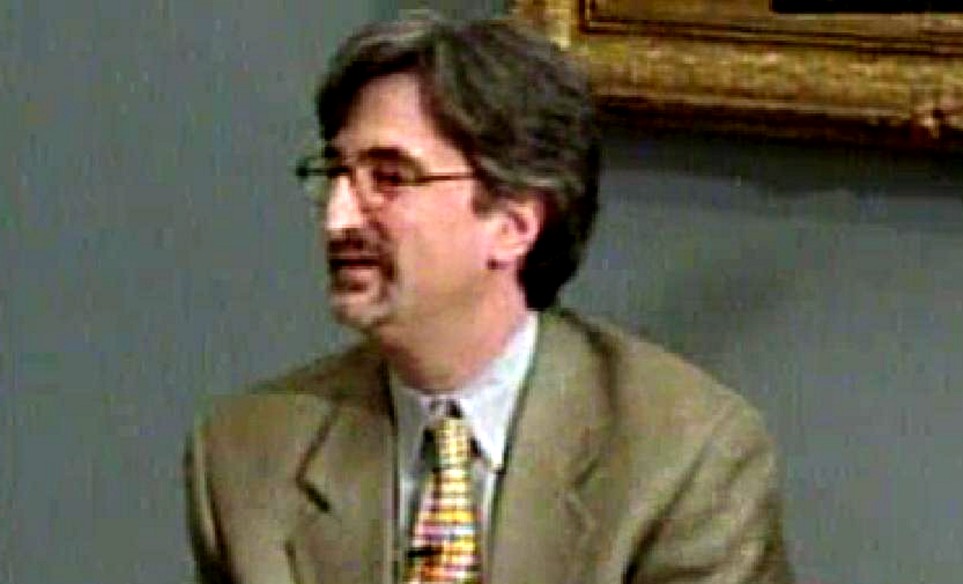
[Below: part of the main AP press room located on 33rd Street on the west side of Manhattan]

[Below: the AP occupies space in that large square dark building immediately behind the Hudson Rail Yards]

Sunday, July 03, 2011
A Deeply Ugly, Inaccurate And Callous Piece Of Junk By Nathaniel Rich In “Rolling Stone”
Posted by The Machine
According to Wikipedia, Nathanial Rich is an American author and essayist.
He is also the son of the New York Times columnist Frank Rich, and various online commentaries about him credit that.and not talent or ethics or hard work for any success he might have had.
Still, you would think that being the son of a high-profile journalist, Nathaniel Rich would try hard to write a fair, factually accurate and balanced report. One carefully checked out, with the Italians he impugns and with no sign of obsessive pro-female-perp bias.
But instead Nathaniel Rich and his editor Sean Woods (image below) have come out with an xenophobic, defamatory, highly inaccurate report..
In this piece Rich comes across like the notorious Stephen Glass who simply made stories up and whose editors never cross-checked until it was too late. Except Stephen Glass that never actually showed bigotry or defamed.
It does not seem too much to ask to expect anybody writing an article about the shocking sexual assault, torture and murder of Meredith Kercher for them to have done their due diligence? And to made sure that every single claim presented has been verified by the official court documents or independently corroborated by objective and reliable sources?
And for Sean Woods and other New York-based Rolling Stone editors even in their decline to check out their writers’ claims, especially with those impugned?
In this piece we analyze just some of the numerous wrong claims by Nathaniel Rich in his article The Neverending Nightmare of Amanda Knox and compare them (as he should have done) to official court documents such as the Micheli report, the Massei report, Rudy Guede’s final sentencing report by the Supreme Court, and testimony at 2009 trial and 2011 first appeal [later annulled].
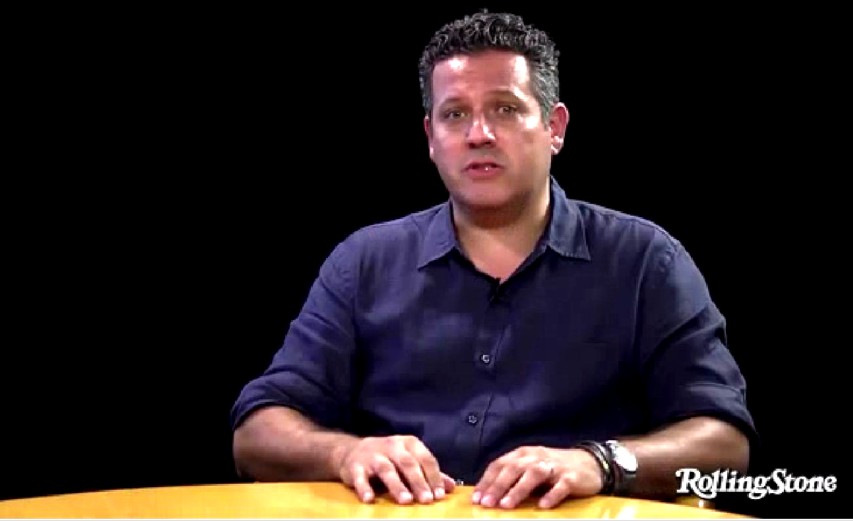
Above: Nathaniel Rich’s editor at Rolling Stone Sean Woods
Claim 1: There were bloody fingerprints all over the apartment
Wrong. Nathanial Rich gets his first basic fact wrong in just the second sentence of his article with his claim that Guede left bloody fingerprints all over the apartment.
There was in fact not even one. According to the Micheli report, the Massei report and Rudy Guede’s final sentencing report, Guede was identified by a single bloody palm print, not a whole lot of bloody fingerprints:
b) traces attributable to Guede: a palm print in blood found on the pillow case of a pillow lying under the victim’s body ““ attributed with absolute certainty to the defendant by its correspondence to papillary ridges as well as 16-17 characteristic points equal in shape and position… (page 5, Rudy Guede’s final sentencing report).
It is confirmed that Guede was identified by a bloody palm print in the Micheli report (pages 10-11) and the Massei report (page 43). There was not a single fingerprint of his or Sollecito and almost none of Knox at the crime scene - which consists of the entire apartment.
Rich’s “her killer” in his opening implies there was only one killer but FOUR courts including the Supreme Court insisted there had to have been three. The lone wolf theory has long been dead. This is why the defense had to drag Alessi and Aviello into court two weeks ago, to try to prove Knox and Sollecito were not the other two.
Claim 2: A provincial police force botched one of the most intensely observed criminal investigations in Italy’s history
Wrong. A Knox cult myth. Nathaniel Rich attempts to disparage the investigation in Meredith’s murder with the smearing claim that it was seriously botched (it wasn’t) and by a provincial police force. Nathaniel Rich is trying to insinuate that that the police officers involved in the investigation were unsophisticated. However, again he only succeeds in revealing his ignorance of even the most basic facts of the case.
Two separate police departments from the Italian equivalent of the FBI in Rome were heavily involved in the investigation into Meredith’s murder: a forensic team from the Scientific Police led by Dr. Stefanoni, and the Violent Crimes Unit, led by Edgardo Giobbi.
Claim 3: Sollecito finally stated that Knox could have left his apartment for several hours on the night of Kercher’s murder while he was asleep
Wrong. Nathaniel Rich’s claim that Sollecito said that Knox “could” have left his apartment for several hours while he was sleeping is simply not true. You can read Sollecito’s various alibis here. Sollecito categorically stated in his witness statement that Knox DID leave his apartment, while he was wide awake. He said she went to Le Chic at 9:00pm and she came back at about 1.00am.
“At 9pm I went home alone and Amanda said that she was going to Le Chic because she wanted to meet some friends. We said goodbye. I went home, I rolled myself a spliff and made some dinner.”(Aislinn Simpson, The Daily Telegraph, 7 November 2007
“Police said Raffaele Sollecito had continued to claim he was not present on the evening of the murder. He said: “I went home, smoked a joint, and had dinner, but I don’t remember what I ate. At around eleven my father phoned me on the house phone. I remember Amanda wasn’t back yet. I surfed on the Internet for a couple of hours after my father’s phone call and I stopped only when Amanda came back, about one in the morning I think.” (The Times, 7 November 2007).
So Sollecito never said Knox “could” have left his apartment “while he was asleep”. The source for Nathaniel Rich’s embarrassing factual error is almost certainly the conspiracy theorist Bruce Fisher, who has repeatedly made the same false claim on his conspiracy website, a site riddled with invented claims.
Shame on Nathaniel Rich for gullibly believing another Knox cult myth, propagated by the likes of Moore and Fisher, and for being too lazy to independently verify this information.
Claim 4: Amanda Knox was slapped on the back of the head
Wrong. Another Knox cult myth. Nathaniel Rich employs the same tactic as the conspiracists Bruce Fisher and Steve Moore who are trying by all possible means to rescue Amanda Knox from those dastardly Italians.
Namely, to give what appears to be a very detailed eyewitness account of what happened at the police station on 5 November 2007 despite the fact he wasn’t even there. He makes all of this up, including “verbatim” quotes from some unnamed police officers.
Two female officers, who had been chatting informally with Knox, invited her to an interrogation chamber.
“Let’s go back over what you did that night,” they asked her. “Start with the last time that you saw Meredith.”
“Again?”
“Again.”
But they went slower this time.
“What did you do between 7 and 8 p.m.?” they asked. “What about between 8 and 9?”
“I don’t know the exact times,” said Knox. “But I know the general series of events. I checked my e-mail, I read a book, we watched a film, we ate dinner….”
More officers kept entering the room. An interpreter showed up. The tone sharpened.
“But Raffaele says that you left his house that night.”
“What? That’s not true. I was at his apartment all night.”
The interrogators became angry.
“Are you sure? Raffaele said you left his house.”
“I didn’t.”
“If that’s a lie, we can throw you in jail for 30 years.”
“I’m not lying.”
“Who are you trying to protect? Who were you with? Who was it? Who was it?”
This bit went on for hours.
There was now chaos in the room. The Italians were shouting at her, arguing with one another, calling out suggestions.
“Maybe she really can’t remember.”
“Maybe she’s a stupid liar.”
“You’re either an incredibly stupid liar,” said Knox’s translator, who was sitting right beside her, “or you’re someone who can’t remember what you know and what you did.” The translator, changing tactics, explained that she had once been in a gruesome car accident in which she broke her leg. The event was so traumatic that she suffered amnesia.
“Amanda,” said the translator, “this is what happened to you. You need to try to retrieve those memories. We’ll help you.”
Knox, ever-credulous, started to ask herself what she might have forgotten.
“C’mon,” said the interrogators. “You were going to meet Patrick that night.” “Remember. Remember. Remember.”
“We know it was him.”
Knox shook her head.
“Remember.”
Boom “” someone slapped her on the back of the head.
So Nathaniel Rich includes the false claim that Knox was slapped on the back of the head. All the witnesses who were present when she was questioned, including her interpreter, testified under oath at trial in 2009 that Amanda Knox was NOT hit even once.
Even Amanda Knox’s lawyer, Luciano Ghirga, confirmed that Amanda Knox had not been hit: “There were pressures from the police, but we never said she was hit.” He never ever lodged an official complaint.
Nathaniel Rich should have pointed out that Knox claimed this hitting only long after, when she was trying to explain why she had framed Patrick Lumumba. He should not have repeated it as if it were incontrovertible truth.
And he should have pointed out that both Amanda Knox herself and both her parents are enmeshed in separate trials for doing that.
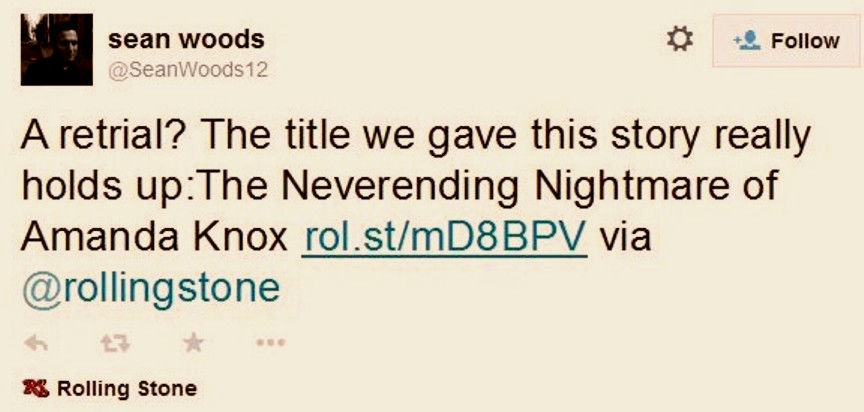
Above: Rolling Stone aggravates defamation - this tweet was sent March 2013
Claim 5: Amanda Knox finally broke down and accused Diya Lumumba of murder at 5.45am
Wrong. Nathaniel Rich clearly does not know the chronology of events at the police station on 5 November 2007. His false claim that Knox finally broke down at 5.45am gives the impression that she had been subjected to a continuous all-night interrogation.
In fact Amanda Knox very rapidly “broke down” and claimed that Lumumba was “bad” and had murdered Meredith when she was still only a witness, not a suspect, and was told Sollecito had pulled the rug from under her alibi. She signed a statement at 1.45am, not at 5.45am, when she repeated the claim voluntarily. (She also repeated it later that same day in writing.)
Amanda Knox’s questioning was stopped at 1.45am when she became a suspect. She wasn’t actively questioned again that evening. However, several hours later she decided to make an unsolicited spontaneous declaration. Mignini was called at 3.30am and he observed her declaration. Knox makes it explicit in her witness statement that she was making her statement spontaneously:
“I wish to relate spontaneously what happened because these events have deeply bothered me and I am really afraid of Patrick, the African boy who owns the pub called “Le Chic” located in Via Alessi where I work periodically.” (Amanda Knox’s 5.45am witness statement).
Claim 6: The knife was selected at random by a detective from Sollecito’s kitchen drawer
Wrong. Nathaniel Rich regurgitates another prevalent Knox-cult myth with his claim that the double DNA knife was selected purely at random. However, the person who actually selected the knife, Armando Finzi, testified in court that he chose the knife because it was the only one compatible with the wound as it had been described to him.
“It was the first knife I saw,” he said. When pressed on cross-examination, said his “investigative intuition” led him to believe it was the murder weapon because it was compatible with the wound as it had been described to him. (Seattle PI,
Claim 7: The confession, in violation of Italian police policy, was not recorded
Wrong. Another Knox cult myth. The police weren’t required to record Amanda Knox’s interrogation on 5 November 2007 because she was being questioned as a witness and not as a suspect. Mignini explained that Amanda Knox was being questioned as a witness in his letter to reporter Linda Byron:
“In the same way, Knox was first heard by the police as a witness, but when some essential elements of her involvement with the murder surfaced, the police suspended the interview, according to Article 63 of the penal proceedings code.”
She came in to the central police station voluntarily and unasked that night when Sollecito was summoned for questioning, and police merely asked her if she could also be questioned as a witness. She did not have to agree, but she did. No recording of witnesses is required, either in Italy or the United States.
Claim 8: Amanda Knox refused to leave Perugia
Wrong. This Knox cult myth is actually contradicted by Amanda Knox herself. In the e-mail she wrote to her friends in Seattle on 4 November 2007 she said she was not allowed to leave.
“i then bought some underwear because as it turns out i wont be able to leave italy for a while as well as enter my house”
Knox actually knew on 2 November 2007 that she couldn’t leave Italy. Amy Frost reported the following conversation.
“ I remember having heard Amanda speaking on the phone, I think that she was talking to a member of her family, and I heard her say, No, they won’t let me go home, I can’t catch that flight’” (The Massei report, page 37).

Above: Rolling Stone aggravates defamation - this tweet was sent September 2013
Claim 9: Mignini suggested that the victim had been slaughtered during a satanic ritual
Wrong. Another Knox cult myth. He did no such thing. Mignini has never claimed that Meredith was slaughtered during a satanic or sacrificial ritual, and that’s the reason why neither Nathaniel Rich - or anybody else for that matter - has been able to provide a verbatim quote from Mignini.
Mignini specifically denied claiming that Meredith was killed in a sacrificial rite, in his letter to the Seattle reporter Linda Byron:
“On the “sacrificial rite” question, I have never said that Meredith Kercher was the victim of a “sacrificial rite”.
Mignini also made it quite clear that he has never claimed that Meredith was killed as part of a satanic rite in his interview with Drew Griffin on CNN:
1’03” CNN: You’ve never said that Meredith’s death was a satanic rite?
1’08” Mignini: I have never said that. I have never understood who has and continues to say that. I read, there was a reporter ““ I don’t know his name, I mention it because I noticed it ““ who continues to repeat this claim that, perhaps, knowing full well that it’s not like that.
I have never said that there might have been a satanic rite. I’ve never said it, so I would like to know who made it up.
In fact Mignini has zero history of originating satanic-sect claims despite Doug Preston’s shrill claims. The notion of a secret satanic sect in Florence goes way back into history and many had declared the Monster of Florence murders satanic because of the nature of the mutilation long before Mignini assumed a (minor) role.
Claim 10: Mignini referred to Knox as a sex-and-drug-crazed “she-devil”
Wrong. Another laughable wrong fact. It wasn’t Mignini who called Amanda Knox a “she-devil”, it was Carlo Pacelli, the lawyer who represents Diya Lumumba, at the trial in 2009.
Carlo Pacelli’s comments were widely reported by numerous journalists who were present in the courtroom. Barbie Nadeau describes the moment he referred to Knox as a she-devil in some detail in Angel Face:
“Who is the real Amanda Knox?” he asks, pounding his fist in the table. “Is she the one we see before us here, all angelic? Or is really a she-devil focused on sex, drugs, and alcohol, living life on the edge?”
“She is the luciferina-she devil.” (Barbie Nadeau, Angel Face, page 124).
Conclusion
Nathaniel Rich has published a sloppy callous error-ridden piece of pure propaganda straight out of the Knox cult handbook, complete with a gushy fawning reference to Amanda Knox in the title.
The piece includes an inflammatory mischaracterization of the extreme caution of the Italian justice system and the various officials working on the case.
There is no mention at all of the never-ending nightmare of Meredith’s family or the fact that she is NEVER coming back. Rich doesn’t seem to have the requisite emotional intelligence or reporter skills to realise that he may have been duped and used by the money-grubbers and killer-groupies of the Knox-cult campaign.
Tuesday, May 17, 2011
Open Letter To CNN Head Ken Jautz: Reports As Terrible As Drew Griffin’s Risks All CNN’s Credibility
Posted by James Raper
Attention Of Mr Ken Jautz
Executive Vice President Of Time Warner Inc For CNN
CNN Headquarters
Atlanta Georgia
Dear Mr Jautz:
Concerning Drew Griffin’s CNN report on Amanda Knox viewable or downloadable here with a transcript here.
As a practicing lawyer with a deep knowledge of the case, I watched your report two sundays ago (Murder Abroad ““ The Amanda Knox Story) with a growing sense of disbelief.
- I know that CNN is these days seriously struggling and losing viewers in droves, and that you have been brought in by Time Warner to try to turn it around.
- I also know that CNN’s extensive past coverage of the case has been unfailingly appalling, and consistently the most biased and misleading of any TV network in the United States.
So when I watched the report I really expected that CNN might have very sensibly turned over a new leaf. Instead, Drew Griffin presented what seems to me to have been the most unprofessional report on the case ever done.
It was as if the expensive and relentless Knox PR campaign had phoned in the entire script, and as if Drew Griffin’s sole role was to parrot it.
If it had been an openly avowed and paid-for public relations exercise on behalf of the Knox/Mellas camapign, it might have won a few points. But the report was promoted as a new investigation. That was a fundamental misdirection. It was in fact the most extraordinarily biased and one-sided presentation that I and I expect many others have encountered.
There were so may errors, omissions, sneers and blatantly misleading suggestions - all leading to a complete lack of balance - that no viewer, other than those who would already be knowledgeable about the case, had a hope of being able to form an impartial and informed view of the case.
One could write a book about the omissions made by the programme, but I will enumerate just some of these, and the errors and blatantly misleading suggestions, as I go through the repprt here below.
Quick summary of the report
First, here is the thrust of the Griffin report. Amanda Knox and Raffaele Sollecito are the victims of a rush to judgement by an obsessive prosecutor, some circumstantial evidence, a discredited star witness, wrong media reports, and limited scientific evidence that is inconclusive and unreliable.
Oh and there was some nasty behaviour, inducing a false confession, by the police towards Amanda which mirrored the nasty behaviour that had terrified the novelist Doug Preston whilst he was in Italy preparing for his book “the Monster of Florence”.
And most, if not all, of this was the fault of the Public Prosecutor, Mignini. The foregoing is also the basic thrust of the Amanda Knox PR campaign which has been repeated over and over again elsewhere.
There were a mere poor fleeting cursory images of the real victim, Meredith Kercher, and maybe three or four dozen highly manipulative images of Knox and her siblings (see several here) going back to when they were tots.
Apart from Dr Hampikian of the Idaho Innocence Project, Doug Preston, and Mignini, and a cameo non-contentious appearance from Meredith’s lawyer, all of the contributors were family or close family friends. None of the defence lawyers partook, perhaps expecting the embarrassing worst, which was duly delivered.
Meredith’s family and friends were not even mentioned, let alone interviewed by Drew Griffin.
Reactions of the prosecutor of the case
CNN interviewed many, with almost endless montages of a young Knox, to attempt to undermine the case.
Although there are dozens of lawyers and experts and reporters that could explain why in the first round Knox and Sollecito were unanimously found guilty, Griffin unprofessionally chose to interview only ONE for that side of the case. He was Mr Giuliano Mignini, one of the two prosecutors on the case, who speaks no English and was thus easy for Griffin to condescend to and seriously mischaracterize. (A full transcript of that interview, translated, will be our next post; be prepared for surprises Drew Griffin clearly wanted to hide.)
I thought that Mr Mignini dealt with Drew Griffin’s unbelieving and cynical stare and his loaded and intentionally unsettling questions ( to which I shall later refer) quite well in the circumstances, since it was obvious right from the start that the unprofessional Drew Griffin was setting him up. At least he dealt with the situation gracefully, and at times even with a little amusement.
As a taster, the first question thrown at him was “Is Amanda Knox evil?” The prosecutor shifted in his seat, thought about this philosophical question for a bit, and then wisely decided to ignore it.
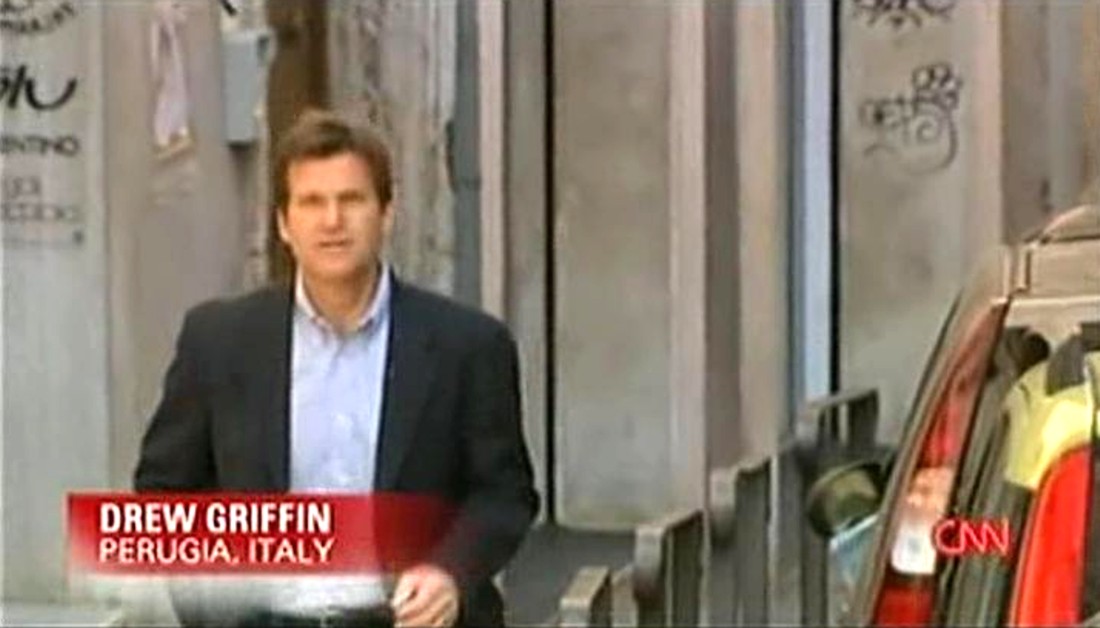
Points of error and omission in the report in the order in which they arise
(1) The most vital document on the case of all, a 427 page judgment on Knox and Sollecito known as the Massei Report, which can be viewed via the link at the top here, was not mentioned at all. It seems that neither Drew Griffin nor any of the programme’s producers have ever cast an eye over this document. If they have, they have blithely ignored it.
The Report contains a detailed resume of the evidence presented at Amanda’s trial and the jurors’ evaluation of it. It does not cover all the evidence that was heard by the court, which was huge, but certainly that sufficient to warrant the verdicts that were handed down.
There are also at least two other vital documents, also ignored, which all set the stage for the present mandatory appeal. They are the Micheli report on Rudy Guede’s judgment, and a recent Supreme Court report endorsing that report and accepting that there were THREE perpetrators of the crime.
(2) There was a photograph of the cottage. In fact, in all there were seven still shots of the cottage, and two showings of a film of the cottage, taken from a vehicle approaching along the road outside from right to left, from east to west.
All had one glaring omission in common.
None showed the west side of the cottage with Filomena’s bedroom window through which Rudy Guede is supposed to have broken in. That this was blatantly intentional was demonstrated by the editing of the film which cut out just as the side of the cottage with the window was coming in to view.
(3) The staging of the break in was a crucial piece of evidence against Amanda Knox dealt with at some considerable length in the Massei Report. Quite apart from that, it is evident from a simple inspection that the climb up to the window would have been extremely difficult and dangerous for even an athletic burglar and indeed there is much evidence that this was not attempted (Massei).
It would have been far simpler for Rudy Guede, a frequent visitor to the boy’s flat on the lower floor of the cottage, to have broken into the girls’ flat via the balcony (as seen in the still shots) on the other side of the cottage. He could have done that unseen and unheard in well under one minute.
The glass window was not shattered by a rock thrown from the outside, because the clothing tossed inside the bedroom had glass on top of it, which in itself is hard evidence that the break-in was staged. That such a break-in was highly improbable was demonstrated by an attempt by the defence to reconstruct the climb up to the windowt that failed miserably.
The only person who could have had an interest in staging a burglary would be one of the occupants of the flat. This is a sore point for Amanda’s supporters, amongst whom I must now assume are Drew Griffin and the producers of Murder Abroad.

(4) It was good to hear from Dr Hampikian that the “police did a good job in processing the crime scene and collecting evidence”. Unlikely that on the basis of this observation he will be making any submissioms to the two independent DNA experts appointed by the court to review the DNA evidence concerning the knife and the bra clasp. Particularly as his other observations were quite ludicrous or fell outside his field of expertise.
Consider this: “They didn’t like the way Amanda behaved, whatever that means, and so they wanted to investigate her, and Raffaele and her boss. When the DNA is finally processed it is not any of their suspects. And so what do you do? What would you do? [laughing] You let them go.”
Really?
Can he, you, or anyone else, think of a police force anywhere in the world which would want to release a suspect in circumstances where a staged burglary, inappropriate behaviour and language pointing to an insider’s knowledge as to the circumstances and manner of the victim’s death, an alibi that no longer held up, and the framing of an innocent man for murder, clearly points to her involvement.
In addition there was early evidence of Amanda’s blood in the bathroom next to the Meredith’s bedroom, as a drop on the sink faucet and mixed with Meredith’s blood elsewhere. Contrary to Dr Hampikian’s contention (and he is not a lawyer) there was sufficient evidence to charge or at least prefer a holding charge pending further investigation. This happens frequently in the USA and UK. In addition Dr Stefanoni was aware that there was further evidence to be collected from the crime scene.
In murder cases suspects are very rarely released on bail for fear that they may abscond. Particularly a suspect who is not resident in the country.
A question for Dr Hampikian. How would you like it if a suspect in the murder of your daughter was granted police bail and skipped the country to return home and evade justice? Make no mistake about it. That is what would have happened.
(5) The DNA evidence was not finally processed, as Dr Hampikian knows, until after the final DNA evidence was collected on the 18th December, weeks after Amanda’s arrest. That was when the bra clasp was collected together with samples from traces identified by luminol. That delay was entirely attributable to the necessity of having to arrange for the defence lawyers and experts to be present to collect further samples, and not incompetence on the part of police or prosecution.
“Forensic expert Greg Hampikian says finding DNA (Amanda’s and Meredith’s) but no blood makes it highly unlikely that the knife was used in a bloody murder. He also says it is surprising that the prosecutor was even allowed to admit such a small unexplainable sample (Meredith’s on the blade) as evidence.” “Would this have made it into a US court? I don’t think it would have made it into a US lab report”.
Not make it into a lab report? Is he trying to be funny?
(6) Well there is the evidence of the police that the knife smelt heavily of bleach which, with its particular size and the fact that it looked so clean, was what made them interested in it. How many people wipe down an item of kitchen cutlery with bleach? I do not know but in my lifetime I have never known anybody do this. Washing up liquid works just fine for me.
Dr Hampikian is of course referring to the Low Copy Number (cell count) DNA reading but the fact is that the graph produced by the DNA electropherogram was a clear match for Meredith’s DNA profile.
Dr Hampikian might be interested to know that LCN DNA is admissible in evidence in at least one jurisdiction in the USA and there is growing support for it with the advances in DNA forensics. The majority of the experts who testified at the trial said that it was clearly Meredith’s DNA.
(7) Furthermore Raffaele explained the existence of the sample by saying that he had accidently pricked Meredith with the knife whilst cooking at his flat. Untrue. Amanda herself testified that Meredith had never been to Raffaele’s flat, and there was no evidence that she had. Nor was there any evidence or suggestion that, prior to the murder, the knife had been to the girl’s cottage.This evidence would in most courts make the DNA evidence admissible.
(8) Dr Hampikian again, on the bra clasp (with Raffaele’s DNA on it) ““ “If that’s all there is it’s a very weak piece of evidence”. “And it’s inconsistent with every other piece of evidence in the case”.
Well, there is the bloody footprint on the bathroom mat which the trial court accepted as being consistent with Raffaele’s footprint rather than Rudy Guede or, for that matter, Amanda. As to the DNA on the bra clasp this was, in forensic terms, an abundant amount, and no one, but no-one, has disputed that this was Raffaele’s DNA.
Perhaps Dr Hampikian can explain how Sollecito’s DNA comes to be there considering that his DNA was not found anywhere else in the flat (other than on a cigarette stub in the kitchen and on Meredith’s door handle) in a quantity even close to the amount found on the bra clasp?
He was clearly advancing the lone wolf theory espoused by Amanda knox supporters given that Guede’s DNA was found in Meredith’s room and on her person. Funny how that DNA evidence is accepted by them but the bra clasp DNA is not. As a forensic biologist perhaps he might also want to comment on the fact that ““
(9) There was not one single trace of evidence, DNA, fingerprint, footprint or otherwise, relating to Guede found on the window sill, window, glass, or any item located in, or anywhere else in, Filomena’s room. And yet a mixed sample of Amanda’s and Meredith’s DNA was found on the floor there. Explain that!
Without question Dr Hampikian’s soundbite contributions to the program were scientifically very inept for someone in his position, but I am sure that he knew what he was doing.
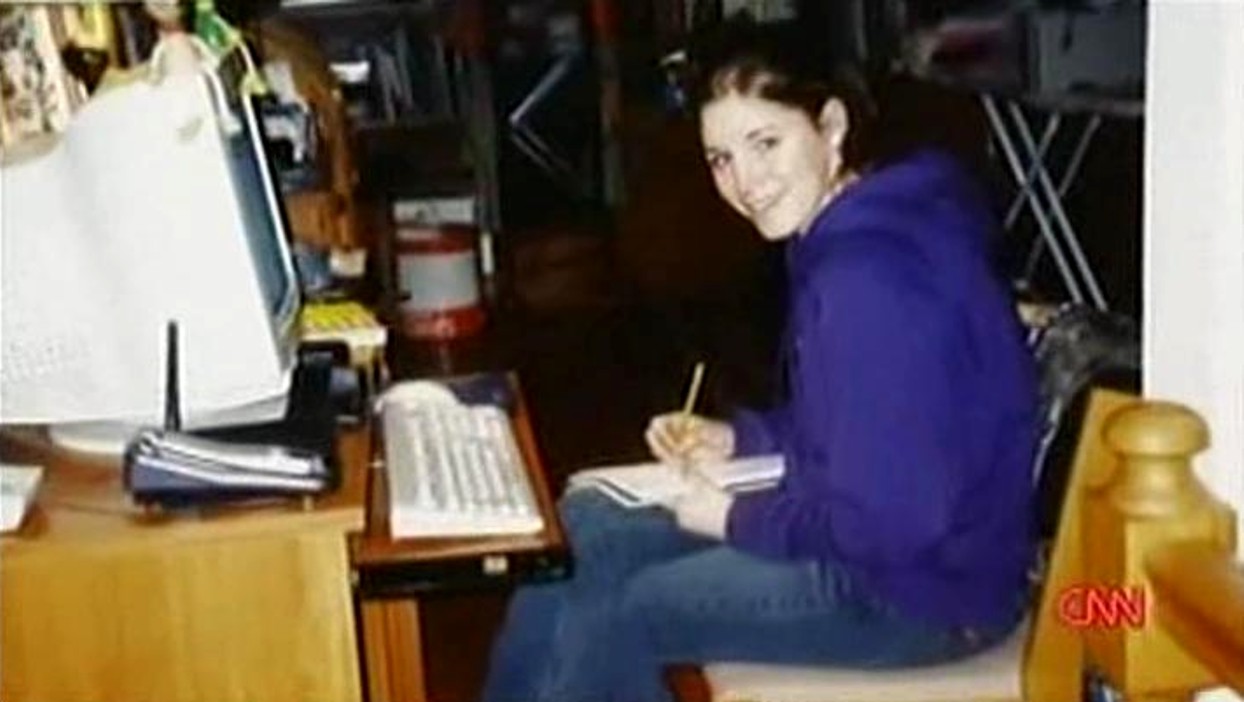
(10) Drew Griffin’s loaded, error strewn and unsubstantiated commentary continued -
- DG: Amanda was “confronted (by the police) with evidence of criminal activity which the police didn’t have.”
Amanda was questioned by the police as a witness in the immediate aftermath of the discovery of the murder along with others such as her flatmates Filomena and Laura, and Raffaele and three of Meredith’s English girlfriends. These were not interrogations. The questioning of Amanda for 52 hours (suggesting intensive interrogation) as mentioned by her father at the beginning is an exaggeration if not a fabrication.
Amanda was questioned (interrogated, if you like) at the police station on the 5th November from around 11.30pm to 1.45 am when the questioning stopped because she had become a formal suspect due to her disclosure that she had been at the cottage when Meredith was being murdered by Patrick Lumumba. She was not questioned again other than in court.
A question for Drew Griffin. “During the aforesaid period what evidence was she presented with that the police did not already have?” I, for one, do not know what he is talking about.
- DG: “The case against Amanda Knox appears to be falling apart.”
Really? News to me.
- DG: “The tabloid press is beginning to tell a different story.”
Well, they are reporting (and sensationalising in some cases) developments (such as they are) in the appeal. But a different story? Again news to me.
- DG: “The case against Amanda Knox and Raffaele Sollecito seems to be hanging on two very small pieces of DNA evidence.”
Actually Drew, that’s what you would like people to think. It would be far more accurate to say that it is the validity of any defence that is hanging on this evidence, and that what crumbs they may be thrown as a result of the review will not really damage that evidence nor alter the soundness of the convictions.
There is plenty of other evidence, all omitted in this biased documentary.
(11) Drew Griffin next remarks: “Curatolo’s evidence was laughable”.
Really? In what way? He seems to have got the date and times and identifications right. Explain that. In fact whatever the appeal court now makes of his testimony there was nothing laughable about his evidence. He was indeed confused in parts but very clear that he saw Amanda Knox and Raffaele Sollecito arguing together in Grimana Square the night before the police and forensic teams arrived in the square and at the cottage.
The confusion that arose was that he introduced elements of Halloween (the night before that) including a costume he saw in his recollection of the said night. However he was also certain that it was not raining when he saw the two together. It did not rain on the night of the 1st November whereas it did on the night of the 31st October.
- DG ““ “He revealed that he was under investigation by Mignini’s office at the exact moment he became his star witness.”
I sensed several slurs coming up and I was not wrong.
- DG ““ “Did he get any favours?
Like what? The promise of a reduction in sentence? It looks like he didn’t.
- DG ““ “So you believe the testimony of a homeless heroin dealer?”
Yes, for the reasons given. Drew, it does not matter what Mignini really believed or believes now. Testimony is heard and evaluated by the court not by prosecutors. Mignini is not heading the prosecution team on the appeal and he certainly has no influence otherwise on judges and jurors anyway.
(12) Another fatuous claim. “But almost immediately after the arrests Mignini had a problem. The third suspect, Patrick Lumumba had an airtight alibi. He was in his crowded bar that night. He could not have been involved.”
Actually the bar was not so crowded. Pretty empty really. Patrick was fortunate that of the few customers who turned up one was a Swiss professor, Roman Mero, who travelled all the way back from Zurich to give police Lumumba’s airtight alibi. But for that Lumumba might have stayed in the frame-up longer thanks to Amanda. She did not ever admit to the police that she had lied about him.
(13) Another fatuous claim. “Knox stated that she was denied a translator when referring to her interrogation/arrest.”
Knox testified on the stand in June 2009 that she DID have a translator at that time, by the name of Anna Donnino.
(14) We then had the introduction of Doug Preston, co-author of “The Monster of Florence” (another inadvertent plug ““ sorry) whose book is in the planning stage for a movie with a star role for this financial donor to The Committee to Protect Journalists. Preston is to be played by George Clooney in the movie.
I do not intend to dwell on this section. It is irrelevant to the Murder of Meredith Kercher and to do so would be to give this pompous individual more of the self publicity he craves It’s sole purpose was to portray the Perugia police and in particular Mignini as arch villains. It might occur to many that Doug Preston has a financial interest in doing this.
We were treated to the following gems ““
“Police interrogated people brutally and extracted suspect confessions from them” (in the Monster of Florence case ““ sorry, another plug)
“I was terrified. I thought these people have the power to put me in prison for the rest of my life.”
Mr Preston obviously does not like having to answer questions or to have to account for himself. Well nobody does really but we are in wimp territory with Preston.
George Clooney could not possibly play such a wimp. Instead the scene in the movie will have to be “sexed up” with Mignini being portrayed as overbearing, obsessive, corrupt and demented.
Hardly the picture he presented in his interview - that is, the two hour long interview that was not shown.
It is not accurate to say the Preston has never returned to Italy as a result of his brush with Mignini. He has been back with Dateline NBC to tape a show on the Monster of Florence (4th and last plug!).
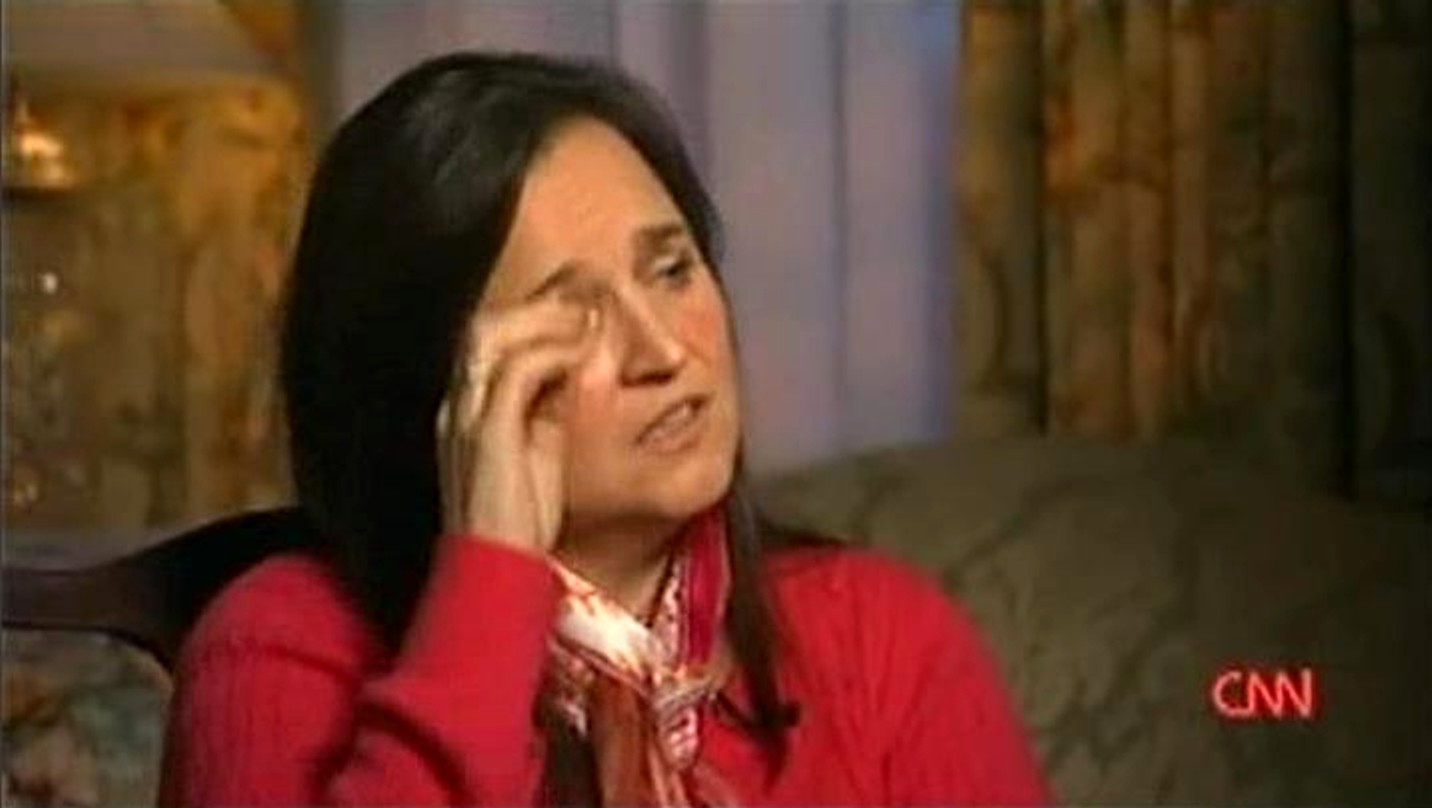
The following are some of the other facts omitted - all pursuant to testimony at the trial or verifiable from other easily obtainable sources. Take note first that there were extensive investigations by experts of cellphone and computer activity and their findings were admitted as evidence. Also it may be helpful to know that Meredith Kercher had two mobile phones, an Italian phone given to her by Filomena and her own UK phone.
These were stolen by her killers and discarded elsewhere. However they were found and handed in to the Postal Police who ascertained that the Italian phone was registered to Filomena and consequently two officers were dispatched to the cottage where they found Amanda and Raffaele.
(15) the fact that Amanda claimed that she returned to the cottage on her own at 10.30 am before the discovery of Meredith’s body to have a shower and collect a mop to clear up a spill of water at Raffaele’s flat the night before”“ which Massei found unlikely given that by her own testimony she had arranged with Raffaele to visit Gubbio that day and had testified that she had already had a shower at Raffaele’s the evening before; and furthermore that Raffaele employed a cleaner who kept a mop and cleaning equipment at his apartment block.
(16) the fact that cell phone records show that Amanda called Filomena at 12.08 pm (on the 2nd November) to report the front door being open, blood on the bathroom mat and Meredith’s door being locked. She was at Raffaele’s flat at the time. Filomena tells her to try Meredith’s phones. Records corroborate that Amanda did call each of Meredith’s phones in turn,
But these two calls lasted just 3 seconds and 4 seconds respectively. Does this sound like a genuine attempt to get hold of Meredith? One also has to wonder why she did not attempt to call Meredith’s phones again once she and Raffaele had arrived together at the cottage when she might have assumed that they would be heard ringing in Meredith’s bedroom.
(17) the fact that Amanda and Raffaele claimed that Raffaele had called the carabinieri to report a burglary before the postal police arrived. This 112 call was later discovered as timed at 12.51 pm after the arrival of the postal police.
(18) the fact that Amanda told the postal police that Meredith always locked her bedroom door even when she went to the bathroom. This was flatly contradicted by Filomena who said that the only occasion when Meredith had ever locked her door was when she returned to visit her mother in England.
(19) the fact that when the postal police looked into Filomena’s bedroom Raffaele told them that nothing had been stolen. That was true - but why had he been so certain?
(20) the fact that Amanda telephoned her mother from the cottage at 12.47 pm (around 4 am in the morning Seattle time), before the discovery of the body. Why did Amanda wake her mother up in the middle of the night? Edda was subsequently puzzled as to why Amanda was unable to remember this call when, as she put it “Nothing had really happened”.
Amanda persisted even with her parents in denying the existence of the call, but then eventually said that she could not remember it.
Edda says that Amanda mentioned in the call that there appeared to have been someone in the cottage, and that she told Amanda to call the police. Amanda did not mention, according to Edda, that the postal police were already there.
(21) the fact that in her 2,900 word e-mail home of the 4th November she professes to have been in a panic about Meredith’s locked door and her whereabouts (calling out her name, banging on her bedroom door, and running out on to the balcony and leaning over the rail and trying to look through Meredith’s bedroom window), but according to the witnesses exhibited no particular concern about Meredith when the postal police arrived, nor raised any concerns with them, rather quite the opposite, before the discovery of Meredith’s body.
(22) the fact that in the same e-mail she says that during her 10.30 am visit to the cottage she noticed the blood “smeared” on the sink faucet, drops in the sink and the bloody foot print on the bathmat. “Ew! but nothing to worry about” she says. She attributes the blood to perhaps Meredith having menstrual issues.Does that really make sense? A footprint in menstrual blood? Meredith? who was always so clean and tidy and who had admonished Amanda for her uncleanliness in the bathroom.
(23) the fact that she claims in the e-mail that Raffaelle tried to force Meredith’s door before the arrival of the postal police and failed, despite the fact that one of the other witnesses forced it quite easily.
(24) the fact that (if Amanda’s account of returning to the cottage at 10.30 am is to be believed) notwithstanding blood in the bathroom (which by Amanda’s own admission was not there when she left the cottage the day before), the front door being open, Meredith’s bedroom door being locked (when it was usual for it to be unlocked),and unflushed feces in the large bathroom toilet (which,she says, made her feel uncomfortable about the situation), Amanda did not think of attempting to contact Meredith by phone (on the assumption that she had gone out that morning) nor take a decision to notify anyone other than Raffaele for up to an hour and a half, until a 12.07 call to Meredith and the 12.08 phone call to Filomena. Does this seem credible?
(25) the fact that the 12.07 call was to Meredith’s UK phone and lasted 16 seconds but oddly she does not mention this call to Filomena seconds later. Nor, before calling Filomena, does she try Meredith’s italian phone. The italian phone was, Amanda knew, the phone Meredith used to make and receive local calls. Massei infers that there was no need to try Meredith’s italian phone because Amanda knew that both phones had been disposed of together. This explains why the first call (immediately prior to calling Filomena) was 16 seconds long (to check whether or not both phones had been found), and why the subsequent two calls (after the call to Filomena) were both very short.
(26) the fact that Filomena was worried enough to call Amanda twice at 12.12 (36 seconds) and at 12.20 (65 seconds) without Amanda picking up the calls. Amanda did pick up the final call at 12.34. Why did she not answer the first two calls?
(27) the fact that Amanda told Meredith’s English friends at the police station details of the body and wounds, although but for a foot it was covered by a quilt and despite her not being in line of sight when the body was discovered, and not having been told any of these details by anyone afterwards.
(28) the fact that when 3 days after the murder Amanda, Filomena and Laura were requested by the police to accompany them to the cottage to check out some details, Amanda, on being shown a drawer of knives in the kitchen, appeared to have had a psychotic incident, putting her hands over her ears and trembling.
(29) the fact that Raffaelle told a British Sunday newspaper in an exclusive interview that on the night of the murder he was at a party with Amanda and not at his flat. He also said that Amanda had gone back to her own flat the next day at midday, and not at 10.30am as she claimed.
(30) the fact that having told the police that she had been with Raffaele all night on the 1st November, sleeping with him until 10.00 am the next morning, Raffaele then proceeded to destroy this alibi on the evening of the 5th November by telling the police that on that night Amanda had gone out and had not returned to his flat until 1 am.
(31) the fact that Raffaele’s own alibi was not corroborated by computer evidence. He claimed to have spent the night indoors, using his computer until late and then going to sleep. In fact all human interaction with the computer ceased at around 9.15 pm and the computer was not re-activated by him until 5.32 am the next morning when it was used for half an hour for music to be played.
(32) the fact that both Amanda’s and Raffaele’s mobiles were switched off sometime shortly after 8.42 pm and were not switched back on again until after 5.32am in the case of Raffaele who activated a text message his father had sent him late the previous night.
(33) the fact that Raffaele’s father had telephoned Raffaele at 8.42 pm and had testified that during the conversation his son told him that while he was washing the dishes he had noticed a leak of water on the floor. This times the dinner Amanda and Raffaele had together as being prior to this whereas Amanda had claimed first that dinner was a liitle after 9.15 pm and then again that it was quite late, perhaps 11 pm (close to the time that Meredith died).
(34) the fact that Amanda’s claim that she slept in until 10 am does not fit easily with the fact that Raffaele was playing music on his computer from 5.32 am nor with the evidence of Mr Quintaville, the food store owner, who says he saw Amanda when he was opening up his store at 7.45 am.
(35) the fact that Amanda and Raffaele were both using drugs. There were multiple corroborating statements to that effect.
(36) the fact that Amanda and Raffaele were constantly together ““ in a symbiotic relationship as Massei put it.
(37) the fact that Raffaele was a knife aficionado in the habit of carrying a pocket penknife. Indeed he was carrying one on him when he was interviewed at the police station on the 5th November.
(38) the fact that Raffaele watched animal porn videos and this so concerned his university that his subsequent behaviour was monitored.
(39) the fact that Raffaele posted a picture of himself on Facebook dressed up as a mummy carrying a butchers’ chopper.
(40) the fact that Amanda had also written a bizarre short story about the drugging and raping of a young girl which she had posted on her web page.
(41) the fact that Amanda and Raffaele have both suggested that the other might have committed the crime.
(42) the fact that when Rudy Guede was arrested Raffaele did not celebrate his pending imminent release but wrote in his diary that he worried that this man, whom he says he had never met, “might make up strange things about me”.
(43) the fact that there are two instances of Amanda’s DNA mixed with Meredith’s identified by luminol (a powerful presumptive test for blood); in the corridor and in Filomena’s bedroom. The luminol also identified three footprints, one in Amanda’s bedroom and two in the corridor which tested positive for Meredith’s DNA, the footprints being comparable to the shape and size of Amanda’s right foot.
(44) the fact (as mentioned by me before but not in your programme) that Amanda’s blood was found in the bathroom. Amanda’s blood was on the washbasin faucet, and the mixed blood of Amanda and Meredith was in the washbasin, the bidet, and on the cottonbud box.
(45) the fact that not only was Raffaele’s DNA found on the bra clasp but that in the electropherogram chart there were ten out of sixteen loci having peaks corresponding to Amanda’s profile. Though this is not as decisive as the DNA result for Raffaele, it does give rise to the hypothesis that Amanda touched the bra clasp as well. Amanda’s defence team may consider themselves fortunate that the bra clasp can not be re-tested.
(46) the fact that a shoeprint on Meredith’s pillow was estimated in the area of size 37, or 38. Amanda’s shoe size, not the other two.
(47) the fact that (according to Massei) the nature of the wounds and injuries sustained by Meredith ( who was a fit girl and who had trained in karate) meant that more than one attacker had to be present to inflict those ( knife wounds, strangulation, bruising to her lips and inner thighs) and to subdue her and attempt sexual intercourse.
(48) the fact that Massei also concluded from the wounds that there were at least two different knives used and that exhibit 36 (the knife on which Amanda’s and Meredith’s DNA was found) was compatible with the wound that ultimately caused her death through blood loss and asphyxiation.
(49) the fact that there were blood spots (from coughing up blood as a result of the fatal knife wound to the throat) on Meredith’s chest and bra. This and other evidence shows that her body was moved, and her bra and some other clothing removed after she had died or at least as she lay dying.This suggests that the evidence of a sex attack is, in part at least, staged.
(50) the fact that there was a footprint (Raffaele’s) in Meredith’s blood on the bathmat but none leading from Meredith’s room to the bathroom. Highly suggestive, if not proof, that there had been a clean up operation.
(51) the fact that the discovery of Amanda’s arced reading lamp in an upright position on Meredith’s bedroom floor (as if for close inspection) is also highly suggestive of a staging or clean up operation.
(52) the fact that Meredith’s stolen mobile phones were found in a garden within a few hundred yards of Guede’s and Raffaele’s apartments. The apartments are within 30 seconds walking distance of each other, much closer to each other than either are to the girl’s cottage.
(53) the fact that the other two girl occupants with keys to the flat had rock solid alibis whereas Amanda had not.
(54) the fact that according to witnesses the relationship between Meredith and Amanda had started out well enough but had started to deteriorate, be it over petty things.
(55) the fact that the placing of a duvet over Meredith’s corpse is indicative of some relationship between Meredith and her killer.
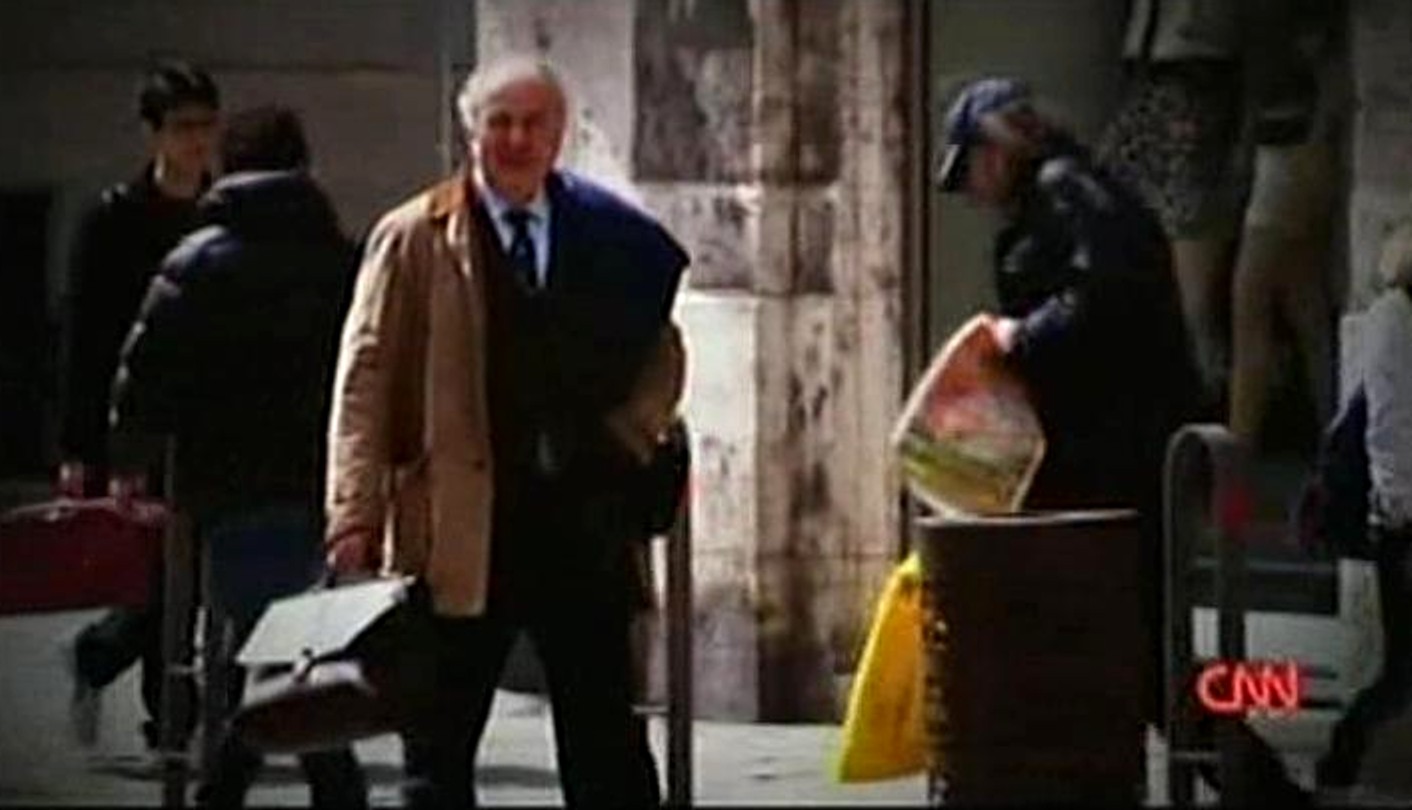
Some conclusions on the case and Griffin report
Most of the foregoing may be circumstantial evidence, but taken together it is powerful circumstantial evidence, more than enough to secure a conviction in any court in the USA.
Who would have the motive to stage a break in, stage further evidence of sexual assault for an invesigator’s benefit, carry out a partial clean up, and lock the victim’s bedroom door?
Curatolo’s evidence that he saw Amanda and Raffaele in Grimana Square, a few metres away from the cottage, having what appeared to be a heated argument, at various times between 9.30pm and 11.pm, is helpful to the prosecution case but by no means essential.
All the emphasis on the admittedly unhelpful and salacious tabloid newspaper reporting is irrelevant. It is a distraction.
In addition Rudy Guede, in his evidence, did indeed implicate Amanda Knox (starting well before the Italian police got their hands on him), and all the evidence from his fast track trial and appeals is now part of the evidence to be considered in the current appeal.
I think that the Italian Justice system would resent the insinuation in the programme that Guede received a reduced sentence because he was co-operative with the police and prosecution in implicating Amanda.
It should be noted that if Mignini, in his alleged rush to judgement, got things seriously wrong, then he would have had to manipulate the evidence of the prosecution witnesses to fit his erroneous hypothesis. A grand conspiracy! - a laughable hypothesis. The following is a list of such witnesses. It is indicative, not exhaustive.
Filomena Romanelli, Marco Zarelli, Paola Grande, Laura Mezetti, Luca Altieri, Inspector Battistelli (Postal Police), Monica Napoleoni (Head of Perugia Murder Squad), Sophie Purton, Robyn Butterworth, Amy Frost, Jovana Popovic, Antonio Curatolo, Marco Quintavalle, Nara Capezzali, Antonella Monacchia, Inspector Finzi, Superintendent Gubbiotti, Commissioner Bartolozzi, Marco Trotta, Claudio Trifici, Gregory Mirco, Dr Luca Lalli, Chief Inspector Latella, Dr Profazio, Dr Patrizia Stefanoni (Police Forensic Service in Rome and prosecution DNA expert), and Dr Torricelli (DNA expert for the Kercher family).
This particular murder case is unusual not just in the interest it has generated worldwide but also to the extent to which it has been discussed and argued over on the internet and in the manner in which on occasions it has been presented (rather than reported on) in the media. It is also unusual that the family of one of the accused has not only taken part in such activity but has hired a public relations firm to help bring this about.
There have been a number of books already but I predict that in future a number of these, and the media generally, will also deal with these additional features of the case in some detail.
Sadly for CNN I expect that “Murder Abroad ““ The Amanda Knox Story” will often be quoted and held up as an example of how bad things got.
I dare say you are free to broadcast what you like and perhaps Drew Griffin’s presentation wrought an overpowering sense of injustice in viewers and improved ratings.
With hindsight, however, I am sure that CNN will regret this shoddy little “documentary”.
It would be nice to think, when Amanda’s conviction is upheld, that CNN will broadcast a detailed corrective documentary. I look forward to hearing from you.
Yours etc
James Raper
c/o True Justice for Meredith Kercher
Sunday, May 08, 2011
Questions For Knox: 15 Questions That Drew Griffin On CNN Tonight SHOULD Have Asked
Posted by The Machine
Drew Griffin’s CNN report on Amanda Knox (replete with dozens of basic errors) can be read in transcript here.
Welcome to migrants from CNN. If you want to form a seriously fact-based opinion, please read this group of posts and especially the one by the very smart lawyer SomeAlbi at the top.
Amanda Knox’s family and friends are notorious for running a mile rather than ever facing any hard questioning. This is unique in crime reporting on American TV where strong suspects and convicted felons otherwise invariably get roasted - heard of CNN’s own Jane Velez Mitchell and Nancy Grace?
So it’s a pretty safe bet that we have got right in advance (see previous posts below) what Drew Griffin’s report for CNN will be like.
It will undoubtedly be very biased and one-sided, with the vast majority of the interviews featuring members of Amanda Knox’s family and supporters being tossed a number of soft ball questions.
The program will no doubt shamefully try to manipulate the emotions of the viewers, with the seemingly obligatory footage of Edda Mellas crying and numerous images of Amanda Knox as a baby and child. None of this has anything to do with the evidence that led to her unanimous conviction.
And it will babble on ignorantly about Mr Mignini without an ounce of impartial investigation..
Don’t expect to see any images of Amanda Knox that undermine her carefully crafted girl-next-door image. Such as the footage of her kissing Raffaele Sollecito outside the cottage whilst Meredith’s mutilated body was still inside, and such as the CCTV images of Knox laughing and kissing Sollecito in the boutique as if she didn’t have a care in the world.
I have listed below a number of tough questions that Drew Griffin should, but its a very safe bet won’t, ask Amanda Knox’s family. First, a couple of vital context facts.
1. The various alibis
Amanda Knox and Raffaele Sollecito both gave at least three different alibis, all of which have turned out to be false. Nobody has ever provided a plausible innocent explanation for the numerous lies that Knox and Sollecito told before and after 5 November 2007.
Amanda Knox told Filomena that she had already phoned the police. Knox’s mobile phone records proved that this was untrue.
She told the postal police that Meredith always kept her door locked. Filomena strongly disagreed with her, and told the postal police the opposite was true.
And in her email to friends in on 4 November 2007, Amanda Knox says she called Meredith’s phones after speaking to Filomena. Knox’s mobile phone records prove that this was untrue and that she had called Meredith’s phones first.
Question for Knox: Why did Amanda Knox lie to Filomena and the postal police on 2 November 2007 and to her friends in her e-mail on 4 November 2007?
2. Sollecito’s alibi lies
On 5 November 2007, Raffaele Sollecito admitted to the police that he had lied to them and said that Amanda Knox had asked him to lie for her. He claimed that Amanda Knox had left his apartment at around 9.00pm and returned at about 1.00am on the night of the murder.
Question for Knox: Why did Sollecito stop providing Amanda Knox with an alibi and why does he still refuse to corroborate her alibi?
3. Sollecito’s further alibi lies
After admitting he had lied, Sollecito was given another opportunity to tell the police the truth. However, he decided to tell the police even more lies. These lies were exposed by his computer and mobile phone records.
Sollecito claimed that he had spoken to his father at 11pm. Phone records show that there was no telephone conversation at this time. Sollecito’s father called him a couple of hours earlier at 8.40pm.
He claimed that he was surfing the Internet from 11pm to 1am. There was no human interaction on his computer between 9.10am and 5.32am.
He claimed that he had slept until after 10.00am on 2 November 2007. However, he used his computer at 5.32am and played music for about 30 minutes. He turned on his mobile phone at about 6.02am and received three phone calls at 9.24am (248 seconds long) and at 9.30am and at 9.29am (38 seconds long).
4. The DNA on the bra clasp
An abundant amount of Raffaele Sollecito’s DNA was found on Meredith’s bra clasp. His DNA was identified by two separate DNA tests. Of the 17 loci tested in the sample, Sollecito’s profile matched 17 out of 17.
Question for Knox: Bearing in mind that DNA doesn’t fly, how would you account for the abundant amount of Sollecito’s DNA being on Meredith’s bra clasp?
5. The DNA on the large knife
Amanda Knox’s DNA was found on the handle of the double DNA knife and a number of independent forensic experts - Dr. Patrizia Stefanoni, Dr. Renato Biondo and Professor Francesca Torricelli - categorically stated that Meredith’s DNA was on the blade.
Question for Knox: How would you account for Meredith’s DNA being on the blade of the double DNA knife?
6. The traces of mixed blood
A number of criminal biologists testified at the trial that Amanda Knox’s blood was mixed with Meredith’s blood. Independent DNA expert Luciano Garofano stated that this was undoubtedly the case and even Amanda Knox’s lawyers conceded that her blood was mixed with Meredith’s blood.
Question for Knox: Why was Amanda Knox bleeding on the night of the murder and why was her blood mixed with Meredith’s blood in four different parts of the cottage?
7. Sollecito claims to cut Meredith
Sollecito claimed in his diary that he had accidentally pricked Meredith’s hand whilst cooking.
Question for Knox: Why do you think Sollecito lied about accidentally pricking Meredith’s hand whilst cooking?
8. Sollecito on Filomena’s room
Sollecito told the police that nothing had been stolen from Filomena’s room.
Question for Knox: How did Sollecito know nothing had been stolen from Filomena’s room?
9. Knox accuses Patrick
According to the corroborative testimony of multiple witnesses, including Knox’s interpreter, she voluntarily accused Diya Lumumba of murdering Meredith.
Question for Knox: Why did Amanda Knox voluntarily accuse an innocent man of murder?
10. Knox refusal to recant
She acknowledged that it was her fault that Diya Lumumba was in prison in an intercepted conversation with her mother on 10 November 2007, but she didn’t retract her allegation against Diya Lumumba the whole time he was in prison.
Question for Knox: Why didn’t Amanda Knox recant her false and malicious allegation against Diya Lumumba when he was in prison?
11. Knox at crime scene
Amanda Knox state on four separate occasions that she was at the cottage when Meredith was killed
Question for Knox: Why did Knox repeatedly claim to be there?
12. Knox’s Seattle call
Amanda Knox called her mother at 4.47am Seattle time before Meredith’s body had been discovered.
Question for Knox: Why did she phone her mother when it was in the middle of the night in Seattle and before anything had happened?
13. Knox forgets that call
Knox told her mother and the court that couldn’t remember making this phone call.
Question for Knox: Do you think Amanda Knox can’t genuinely remember phoning her mother at in the middle of the night?
14. Knox involvement
Amanda Knox voluntarily admitted her involvement in Meredith’s murder in her handwritten note to the police on 6 November 2007.
Question for Knox: Why did Amanda Knox voluntarily admit that she was involved in Meredith’s murder?
15. Knox calls Meredith
Knox claimed that when she called Meredith’s Italian phone it “just kept ringing, no answer”. Her mobile phone records show this call lasted just three seconds.
Question for Knox: Question for Knox: Do you think Amanda Knox made a genuine attempt to contact Meredith on 2 November 2007?
Friday, April 29, 2011
Committee To Protect Journalists Responds, But Provides No List Of Sources Or Interview Transcripts
Posted by Peter Quennell
Click above for the response by Nina Ognianova. Comments are open below that CPJ post and both Kermit and Doug Preston have taken advantage, Kermit gracefully, Preston petulantly..
Nina Ognianova does not address Kermit’s contentions, though she did link to TJMK, and really responds only in broad generalties. She still leaves standing the smears of Giuliano Mignini and other Italian officials that the Committee to Protect Journalists chose to broadcast globally.
We can find zero evidence that CPJ interviewed anyone in Perugia, except presumably for the strenuously anonymous blogger “Frank Sfarzo” (real name Sforza) who the CPJ may actually realize now is not a real journalist and who posts mostly mischievous nonsense under an assumed name.
Nina Ognianova does not explain why neither Mr Mignini not anyone in the police or judiciary were interviewed before the CPJ smeared Mr Mignini in an open letter sent to Italy’s President and a number of other notables worldwide.
There’s been good commenting starting about here about this already on PMF where some are warming to the idea of a public hearing in Perugia (“Frank Sfarzo” goes on trial early in May)
Maybe “Frank Sfarzo” and Doug Preston can be made to finally put up or shut up. This may not be the result the hornswoggled Joel Simon was intended to deliver..
Tuesday, August 31, 2010
Deja Vu All Over Again: In A Time Warp Linda Byron Is STILL Actively Misleading Seattle
Posted by Peter Quennell

Click above for the “scoop” by Linda Byron and an out-of-date and unrelated video.
Linda Byron has in fact had the extraordinary Massei Report on the evidence and the sentencing reasons for Knox and Sollecito for THREE WEEKS and she even acknowledged it with thanks and said she would be sure to read it.
But apparently not yet. Amazingly, Linda Byron does not even MENTION Judge Massei’s Report here.
Linda Byron’s “scoop” on an FBI agent turns out to be about (surprise, surprise) a claimed ex-FBI agent “Steve Moore” who (if he actually exists) seems to have zero track-record and reputation among current federal and local law enforcement who are watching the case.
Precisely these same few shoot-from-the-hip claims were made by “Steve Moore” several months ago on a website. Nothing new, nothing corrected, and still riddled with errors and false claims. They are so easy to shoot down that the posters over on PMF hardly even bothered to laugh at them before moving back to their usual careful in-depth discussions.
The Massei Report that Linda Byron studiously ignores now contradicts in very great detail the same few claims that “Steve Moore” makes - the evidence collection, the possible motives, the scenario on the night, the physical evidence, and the true nature of the interrogations.
And he simply leaves out altogether huge areas. Perhaps 80 percent of the whole.
The multiple alibis that contradicted one another and STILL contradict one another. The allegations that Knox made IN WRITING against Patrick when alone in a cell. The extensive luminol evidence and the extensive mixed-blood evidence. The telling behavior on the several days after. The sad facts of Meredith’s autopsy. The very extensive and very damning mobile phone records and transcripts. The computer records and recorded times it was switched on and off. The various eye-witness accounts. The facts and the reasoning that showed that there is no way that Rudy Guede could have acted alone.
The few supportive comments below Linda Byron’s piece seem desperately grateful, and ultra-shallow on the real facts. More hate-speech about Italy, of course. “The italian government and (in)justice system is regarded as one of the most corrupt in the first world. she would have gotten a fairer trial in mexico.” Both those claims are untrue. Also as usual, very heavy promotion of a tainted and misleading FOA website apparently paid for by Curt Knox.
Ex FBI agent “Steve Moore” really should download and read the Massei Report and see why ALL of his claimed former colleagues consider this case to be closed.
Thursday, June 18, 2009
The Second Misleading New York Times Comment On The Case By Egan
Posted by Skeptical Bystander

No prizes for guessing that this is Italy’s wonderful Venice.
1. Seattle-ite Egan Gets It Bady Wrong, Again
Timothy Egan of the New York Times came back with a follow-up justification to his first post.
The cat was out of the bag at that point, of course, and the first post was being widely ridiculed as untrue and unfair both in the US and in Italy.
Egan’s second post makes me wonder if he actually even read the comments under his first post before firing off his second round. It also makes me wonder if Egan has any idea of how badly his “contribution” was received in Italy, let alone why.
Frankly, I was surprised that a “Pulitzer prize winning” journalist would make these basic mistakes and write such a shockingly bad article to boot.
I posted this NY Times comment on that second post addressed at his first piece, lamenting the number of basic factual mistakes he made, though without enumerating all of them.
From memory, there are at least five major errors in Egan’s blog entry still not corrected
1. Egan claims that no translator was present for the Nov 5 questioning. This is false. Granted, Edda Mellas and others have made this false claim on the record, repeatedly, even after the Italian police formally challenged it. (Note to Egan: check the CNN world news website once in awhile.) Finally, Edda and others had to change their tune in light of the undisputed facts, but they did so by shifting the claim from no interpreter to no “professional” interpreter. This too turns out to be false. How can Egan continue to claim that no interpreter was present when at three were called upon by the prosecution to testify under oath as witnesses to the session of questioning where Egan wants us to believe there were no interpreters? Incidentally, they—like all of the other relevant witnesses—have stated under oath the Knox was not physically abused or maltreated. Conversely and as a reminder, Knox is not testifying under oath.
2. Egan also claims that there is forensic evidence against Guede only, and not the other two suspects. This, as everyone else except official FOA spokespeople know, is false. For anyone who is interested in knowing what it is, this non-profit website would be a good place to start. It is too bad that Mr. Egan did not do more than just consult the new afterword to Doug Preston’s Monster of Florence book. In fact, Egan’s blog entry serves as a friendly review in a way.
3. Egan stated that a 6-person jury, with two judges among them, would decide the fate of Knox and Sollecito. Ii shows Egan’s sweeping and sweepingly ignorant indictment of the Italian criminal justice system. In fact, the correct numbers are 6 lay jurors and 2 judges, for a total of 8 individuals - and thereafter two automatic appeals. Does this make a difference? Only insofar as it is definitely better to demonstrate a grasp of the basics of the system one seeks to criticize. Instead of quoting Rachel Donadio, who was in fact talking about Italy’s Prime Minister, Egan would have been better off trying Wikipedia or, better still, a comparative law website. There are tons of them out there.
4. Egan states that Amanda Knox only suggested that Patrick Lumumba maybe killed Meredith Kercher. In fact, Knox did far more than that. She firmly accused him of killing her roommate, twice orally, and then three times in writing. The written statements were not coerced, and testimony from half a dozen other people (again, under oath) refutes Knox’s claim that her oral accusation was coerced. An investigation is underway, ordered by one of the two prosecutors. In fact, Knox admitted on the stand that her third written statement was not made because she was hit - it was a “gift” to the police who supposedly tortured her, whatever that means!
5. Egan failed to point out that two prosecutors are working side by side on this case. If Mignini has to step down because of the verdict in a pending matter, the case will go forward in the able hands of Manuela Comodi who is handling more than half the testimony. I hear she is clean as a whistle: not so much as a slap on the wrist during her career. Instead of just repeating what Doug Preston writes, Egan could have told us in more detail about the charge pending against Prosecutor Mignini.
2. Enabled By Heavey, Bremner and Ciolino
Allegedly, some individuals—like Paul Ciolino, whom Egan quotes in his rebuttal (?) entry—speak of a “pattern” of misconduct, but I have been unable to find any other example of possible “abuse of office” except for the one related to the Monster of Florence case.
Wouldn’t it be great if an investigative journalist of Pulitzer prize caliber were to take the time to find out what the facts are in the longstanding feud between Mignini and Spezi, Doug Preston’s friend and associate? That would really add substance to this fake debate.
Paul Ciolino’s paid work for 48 Hours on this very case has been laughably poor. Forgive me for not taking the time to count the ways.
In a Seattle fundraiser for Knox he stated that legal experts in the US and Italy believe Mignini is “mentally unstable”.
What this really boils down to is the following: one quote in Italian by an Italian judge that was taken out of context (that’s the Italian legal expert (singular)), and statements made by two people from the Seattle legal community, Anne Bremner and Judge Michael Heavey, who have never set foot in an Italian courtroom but who happen to be members of FOA (Friends of Amanda).
Heavey, a neighbor of Knox’s, actually wrote a letter to the authorities in Italy asking for a change of venue. That letter ““ which incidentally was written on Heavey’s official Superior Court Judge letterhead—was so full of errors, and was so embarrassing to Knox’s own defense team, that Heavey is said to have written a second letter in apology.
The first letter, after being prominently displayed on Anne Bremner’s website, was then quietly removed. As if it had never existed. Never apologize, never explain, as Flaubert said. Where is that letter of apology? Why is it not displayed on Bremner’s website? Was it too written on official letterhead? As a King County taxpayer, I’d sure like to know.
Where are those Pulitzer Prize winning journalists when you need them?
Saturday, April 11, 2009
CBS Reporter’s Bizarre Claims About Prosecutor And Reporters
Posted by Skeptical Bystander

Peter Van Sant of CBS is the slightly confused-looking reporter in the images above and below.
In promoting his “48 Hours” report tonight, which by all accounts seems intent on equaling CBS’s record for worst report on the case, Mr Van Sant has come out with an interview which is an absolute classic for how not to do such things.
First, consider Mr Van Sant’s remarks about one of the prosecutors in the case.
As for the accusation that Kercher was killed over a sex game, Van Sant cites an Italian blogger for putting that notion into the prosecutor’s mind. Van Sant said the blogger claims that she speaks to a dead priest who tells her what happened at crime scenes.
The blogger told the main prosecutor in the Knox trial, Giuliano Minnini (sic), that this was a satanic sex game and that’s how the theory started, Van Sant said.
Sliming of a prosecutor in this fashion has already been strongly protested against by Amanda Knox’s own defense team.
And the prosecutor in question, one of two (real name: Mignini), many weeks ago made clear that he had NOT listened to the Rome blogger (had locked her up in fact), is NOT especially pushing any particular theory of motive for the crime, is NOT especially central to the continued momentum of the trial - and has actually started a lawsuit against PRECISELY this kind of libel!
Second, consider Mr Van Sant’s remarks about the reporting of the case.
Among the many (actually rather neutral and non-inflammatory) journalists on the case that Mr Van Sant seems intent on sliming is of course Andrea Vogt of the Seattle PI. He all but refers to her by name and it seems rather obvious who he had in mind.
Ms Vogt is the reporter from the Pacific Northwest who is based in Bologna, Italy and who has been covering this case for the Seattle PI for over a year. Many observers have been impressed with her thorough, objective and factual reporting, particularly since the trial phase began.
Anyone who has been following the case knows how non-objective and pro-defense much of the reporting has been in the US, and how much fluffy air time has actually been arranged by the family-hired PR firm Marriott and company.
So the particular focus of Mr Van Sant’s criticism is really surprising. After claiming that Italy has the most irresponsible tabloid press on the planet and that local Seattle papers like the Times and the PI can’t afford to send reporters to Italy to cover the story, he explained that they hire “stringers”. Apparently these stringers simply translate articles from the Italian tabloids into English and, via the local newspaper circuit which publishes them, they get recycled and become legitimate news.
Mr Van Sant actually uses the terms “filtered” or “laundered”, as if he were talking about Mafia money being invested in life insurance policies.
The Seattle PI has enough problems without having to deal with this irresponsible and possibly defamatory remark. And Andrea Vogt, who to our knowledge is the only “stringer” working on this case who is filing stories for the PI, has been providing some of the best coverage of this case to US readers.
There are many good reasons for this: Ms Vogt is fluent in Italian and lives in Italy for much of the year; and she is a talented writer and an intelligent reporter. But most important, she has been making the trek from Bologna to Perugia and back, and spending Fridays and Saturdays in the courtroom for hours on end.
She recently wrote a piece on the mood in Seattle for Panorama, an Italian publication. For that article, she interviewed people in Seattle—including friends of Amanda Knox.
I would imagine that as soon as each daylong court session ends, she sits down - like the other serious reporters covering this case - and tries to turn out a fair and accurate report of the day’s event under very tight deadlines. Her reporting for the PI has been excellent and fair.
It is not only unfair, it is also dishonest to imply that Andrea Vogt is translating Italian tabloids and trying to pass it off as original reporting. If this interview with Mr Van Sant is any indication, then CBS viewers tonight may be in for an evening of fiction.
In which case, I think I’ll watch “The Greatest Story Ever Told” or “The Sound of Music” instead. Closer to reality than is CBS….
Wednesday, February 11, 2009
Is Seattle Case Coverage STILL In Cloud-Cuckooland?
Posted by Peter Quennell

Click above for the West Seattle Herald story by (surprise surprise) Steve Shay.
Again, a complete lack of reporting of any of the hard facts. Again, a cynical, surrealistic and very misleading pull at Seattle’s heartstrings.
Has news of the Micheli report and of the Friday-Saturday testimony still not reached Seattle? There’s not yet been an inch of good coverage in any Seattle outlet.
Seems Seattleites themselves are getting ready for some real talk now. These contrary perceptions appeared right under Steve Shay’s piece.
To Brian Jones [editor of the West Seattle Herald]
I am fascinated how you and Steve Shay try to benefit from the murder of Meredith Kercher and try to get exposure and publicity for yourselves out of this.
Fascinated is probably the wrong choice of word, disgusted fits better.
To date I have seen one plausible scenario, and one ridiculous attempt at pulling the wool over everyone’s eyes.
The prosecutor’s scenario makes sense to me, and Amanda Knox’s scenario that she was not even there at the night of the murder does not.
Why was the washing machine running when police arrived, containing Meredith Kercher’s bloody clothes, when she had been dead for more than 12 hours?
A washing machine does not take 12 hours to wash clothes.
Why were Amanda Knox and Raffelle Sollecito at the murder scene with a mob and a bucket?
Why did the police find a receipt for 2 bottles of bleach purchased from a near-by store a few hours earlier?
Why does the shopkeeper of the store issuing the receipt say that it was Amanda Knox who bought the bleach?
Why did Amanda Knox tell police that Meredith Kercher usually locked her room door, when the other roommates say the opposite?
Why did Amanda Knox knew details of the position of the body, even though at the time the door was opened she was in no position to view the body as testified by witnesses?
Seattle media belatedly starting to corroborate or challenge these very damning perceptions would seem to be the best thing to do now.
For Seattle and for Amanda Knox both.

